Inside Man: From Mercedes engineer to classics restorer
“I hope I’m not scaring you,” Jaime Kopchinski says to the photographer and me. We’re passengers in his 1959 Mercedes-Benz 219, driving past the old churches and barns that surround his shop. I never saw the speedometer go far past 40 mph, but that indeed felt fast for a car with a radio made of tubes.
A few minutes in, though, I started to adopt the confidence Kopchinski had in his Mercedes. It wasn’t rolling hard through turns. Nothing groaned. The seats didn’t bounce or vibrate. It held the road and absorbed bumps well (an important attribute in post-war Germany).
The drive demonstrated a point that Kopchinski had made earlier about vintage Mercedes-Benzes: “These cars are designed to be extremely robust. It can run sustained at 5000 or even 6000 rpm all day until you run out of gas.” A Mercedes such as this, like the ones he works on, were built for real driving, in modern traffic. His job is to get them back to that factory setting.
You wouldn’t think much of Kopchinski’s place, Classic Workshop, if you drove past it. Just a nondescript New Jersey warehouse some 50 miles west of Manhattan. Yet it’s notable for a number of reasons. For one, it’s bursting with youth. If you need confirmation that the classic car world is full of young, curious, capable geeks, here is a good place to look. Kopchinski is only 44. He’s got a beard, flattering eyeglasses frames, and works in a black t-shirt with the shop’s logo—a minimalist outline of a thin vintage Mercedes steering wheel, designed by a friend who worked in fashion marketing.
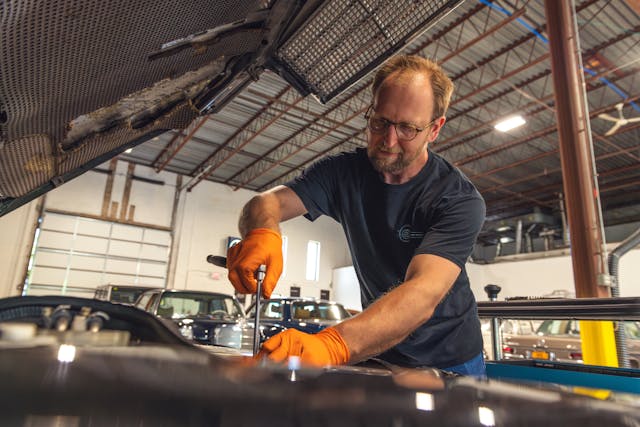
He has two employees: Alexander Potrohosh came from Ukraine with his wife and two-year-old son as refugees. Aside from his mechanic skills, Kopchinski says Potrohosh has a special touch with dent removal. Veronica Petriella is a recent graduate of Universal Technical Institute and drives an ’87 300SDL. She’s also transgender, which is only worth mentioning because she exemplifies Kopchinski’s mission of hiring techs with a wide spectrum of backgrounds. “At the moment, we don’t have any techs from the traditional dealer or repair shop world,” he says. “That’s quite intentional.”
Then there’s the simple fact that this shop exists at all. The pandemic made the already tough business of automotive restoration even more challenging. With the cost of parts on the rise and skilled labor on the decline, even some veteran restorers have decided to call it quits. Yet for Kopchinski, it’s the realization of a long-held dream.
Despite his young age, he already has a decades-long list of accomplishments in the automotive industry which informs how the place operates. Before he opened Classic Workshop in March 2023, Kopchinski worked in-house at Jaguar Land Rover, managing a team of engineers tasked with optimizing the infotainment systems in models like the 2020 Defender. And before Jaguar Land Rover, starting in the early 2000s, he worked on the radios and infotainment systems in Mercedes-Benzes. You can find his work in the AMG GT, the E-Class, the S-Class, and Maybachs of the 2000s and 2010s.
In 2017, when Mercedes relocated his department from New Jersey to Southern California, he reluctantly quit, took the severance pay, and spent the next several months wrenching on cars in his home garage. “That was probably the first taste I had of actually working on cars all time,” he says. “It was the best.” Five years later, when he was at Jaguar Land Rover, word-of-mouth referrals led to a waiting list of over 30 cars. Meanwhile, the pandemic spiked the value of the vehicles he was working on. He started asking around about which buildings were available and applying for loans. Wherever he went to make his case to get the operation off the ground, he arrived in a vintage Mercedes-Benz, usually a 1972 280SE, as a conversation starter for the business.

He found his building, secured loans, and convinced the town council to let him open his business. After he had set up successors and delegated projects, he told Jaguar Land Rover that March 10, 2023 would be his last day. “Every one of my colleagues wanted to know about the business,” he says. “Because they’re car people. They were so excited about someone going into their passion.”
That background gives him a unique perspective: Although he’s obviously obsessed with old cars, he is not one to romanticize the past and dismiss the automotive present. Kopchinski can wax poetic about the latest generations of the S-Class. He recalls test driving one in Florida, along the Tamiami trail. “There’s this dirt road that runs parallel to half of it,” he says. “We were going 40 miles an hour in a prototype S-Class, just flying down the road, rushing through puddles, slowing down for the alligators. They’re just so robust.”
His past life may also inform his appreciation for what he calls “The real treasures in this place.” On a shelf behind one of the workbenches, underneath a tool for diagnosing Bosch fuel injection systems, there are dozens of small books. They’re full of diagrams and specifications—torque for certain bolts, power output curves, something called “injection timing device bushings.” “It’s every technical spec that you could ever imagine,” Kopchinski says.
The shop itself is huge, bright—it’s such a big space that you don’t really have to hunch over or watch where you’re stepping. Inside are three lifts, workbenches, organized shelves full of parts and tools, a wheel balancer, a forklift, and a bunch of customer vehicles—an R129 SL-Class, a W126 S-Class, a G-Wagen, stuff from post-war all the way through the ’90s. The walls have big plastic Mercedes-Benz star logos and posters that he rescued from the trash, at his old job.
The shop is busy with between 15 and 20 vehicles being serviced on any day and a waitlist of around 35. The work surfaces reflect this, with Post-Its and grime-covered parts. But the space is so clean and organized that you’d think it serviced electric vehicles. The only blemish on the surgically clean, light gray floor are some fluids that spill from an old SL.
Along with the manufacturer’s obsessive documentation and a range of specialty tools, Classic Workshop’s operation depends on a reliable flow of quality parts. Which, he says, Mercedes does especially well. “A lot of people like to complain that Mercedes doesn’t support their classic cars,” he says. “But I find that to be untrue.” He gets daily FedEx deliveries from Mercedes-Benz Classic Center in Long Beach, California, which supplies the majority of the parts that he uses to get and keep cars running. “Pretty much anything I could need, they can get me tomorrow morning,” he says. For components that he can’t get straight from the source, he orders them from separate supplies, which Mercedes will often hire to keep up with demand. These replacements might cost more than and look a bit different from the originals, but the metal and rubber will be the same as what was put in the vehicle at the factory.
Part of what makes sourcing so easy for him is that, as he observed while working there, Mercedes thinks hard before making any changes to their cars. Both an early 1970s S-Class and a 2015 S-Class, he points out, have the wiper and headlight controls in the same place. Another example: a connector that he pulls from under the hood of a 1991 420SEL, which is almost identical to the same corrosion-resistant, expensive connector in modern Mercedes-Benzes.
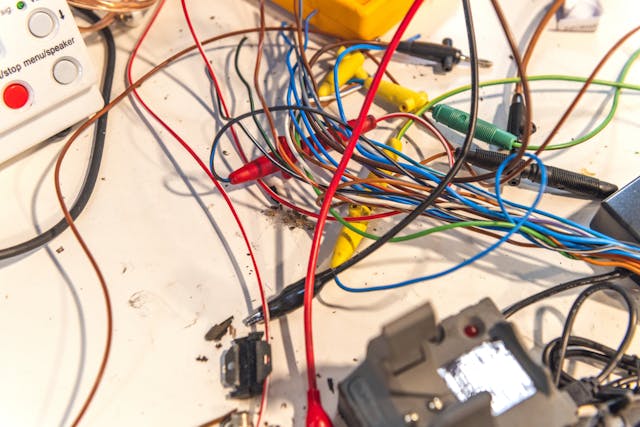
“I’m sure these engineers knew more than we do right now about that particular component. Mechanics love to say, ‘Why did the engineers do this?’” Kopchinski says. “But there’s a million reasons why they engineered a thing a certain way, and it’s not to screw a mechanic 15 years later.”
I ask him what these modern, gadget-laden models will mean for his shop and for people who want to buy an older Mercedes. The current models are loaded with transistors, sensors, and screens, tech hardware that were used to failing or becoming obsolete within a decade. Will touchscreen-operated scent diffusers be repairable?
Back when Kopchinski was working on the 2003 E-Class, he had the same thought: that they’ll be too complicated to fix, that they’ll only last 15 years. “Now, 20 years later, they’re great used cars,” he says. “And they’re maintainable, because everyone figured out the electronics.” That’s because this era of auto technology coincided with the growth of the internet, which made it easier to buy and learn how to use modern tools to install replacement parts. “Young people who are buying the 20-year-old Mercedes for their first $5000 car, they grew up in the 2000s,” he says. “Electronics don’t scare them at all.” Kopchinski refers me back to his point about the caliber of work that he saw done at Mercedes: “[The engineers] take quality extremely seriously. [The cars] are just different. And that’s okay.”
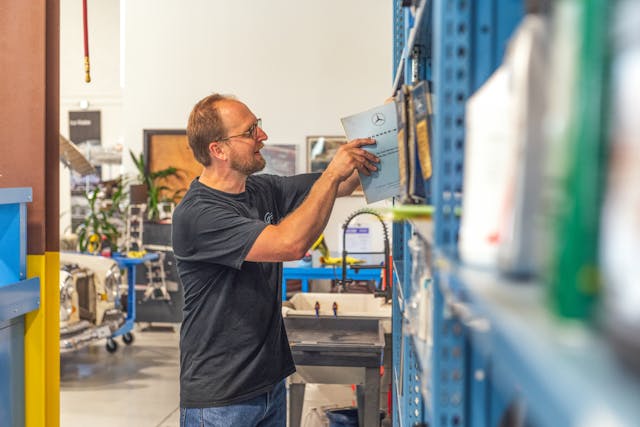
Now, a skeptical reader might note that were it not for those electronics, modern Mercedes wouldn’t depreciate to $5000 in the first place. Yet part of what makes Kopchinski so good at making you want a classic Mercedes is that he sounds like he’s never stopped being a fan. By his estimation he’s owned between 75 and 100 of them. Most were ancestors to the cars he was helping engineer through the 2000s and 2010s. (He’s also owned two Porsches, two Saabs, a Volvo, and currently owns an NSU Ro 80—a West German sedan with a Wankel engine.)
Listen to Kopchinski for long enough and it becomes tough to be cynical about modern cars. The screens and driver aids in modern S-Classes seem less like excess gadgetry and more like timestamp advancements that mark the evolution of a brand. His shop, then, keeps examples of the markers in that timeline in motion, all keeping pace with each other on the road.
We go back to his shelf of Mercedes-issued technical books. In the copies dating from the late ’50s and early ’60s, many pages are dedicated to a then-radical technology: fuel injection.
***
Check out the Hagerty Media homepage so you don’t miss a single story, or better yet, bookmark it. To get our best stories delivered right to your inbox, subscribe to our newsletters.

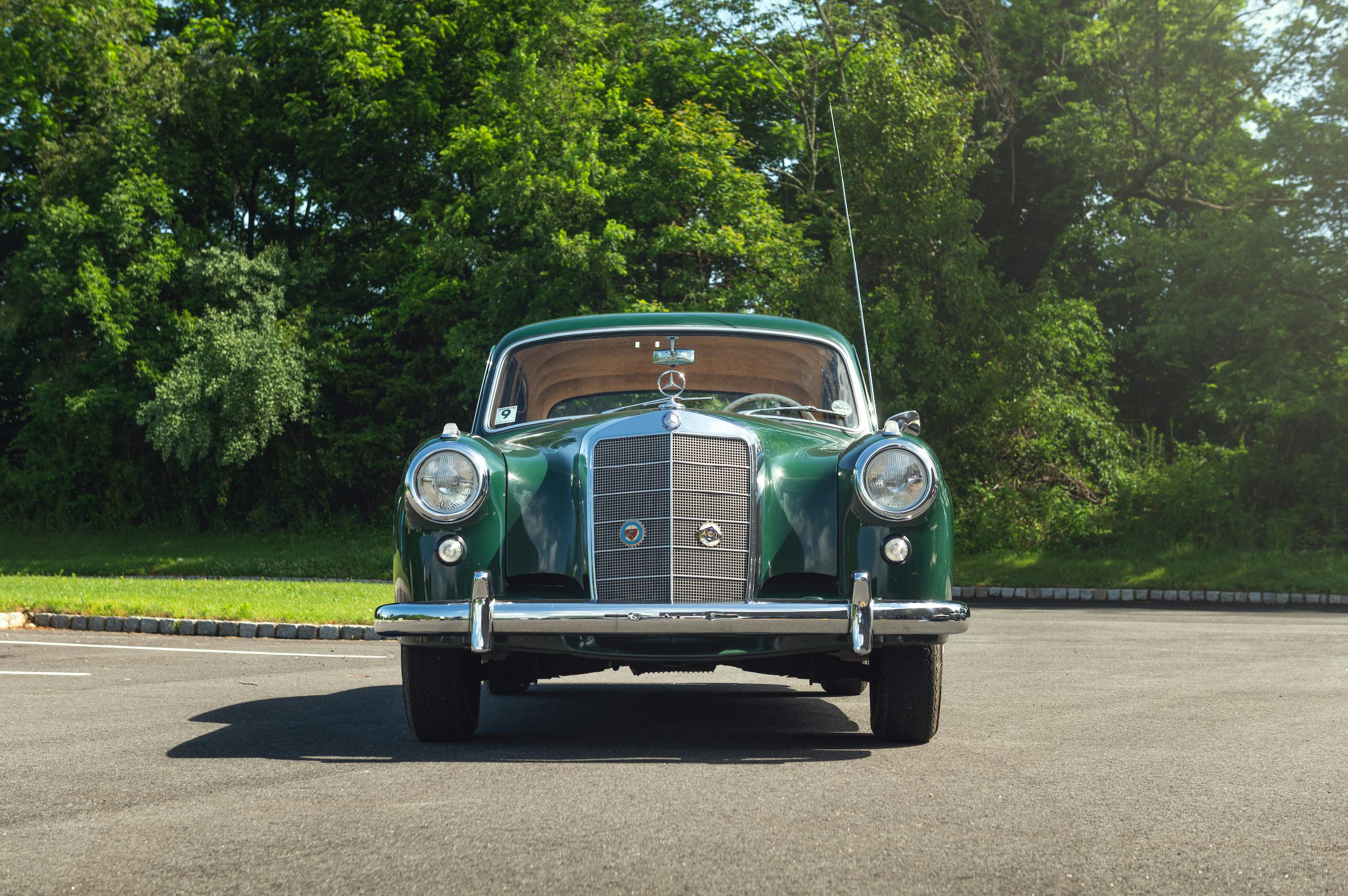
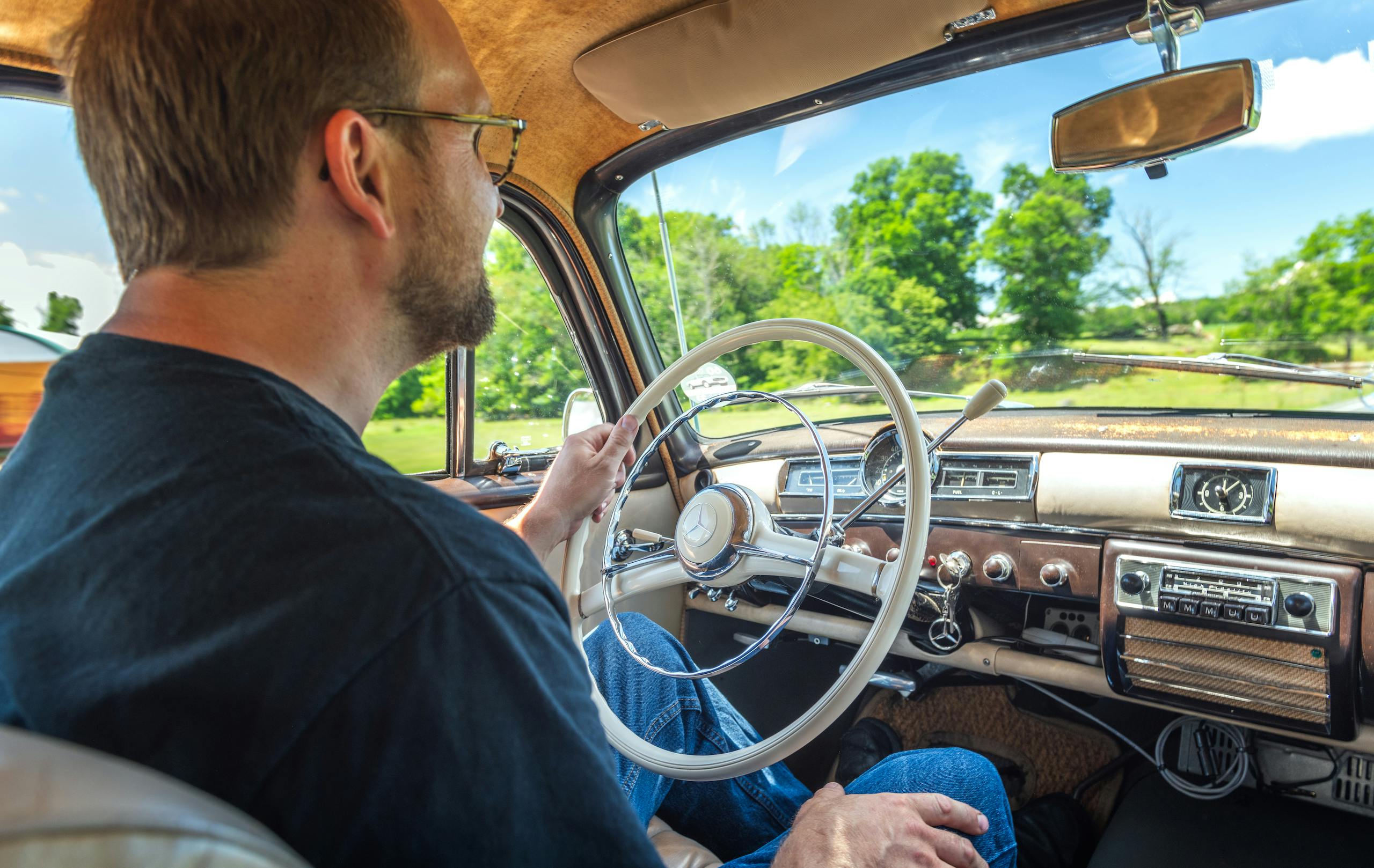
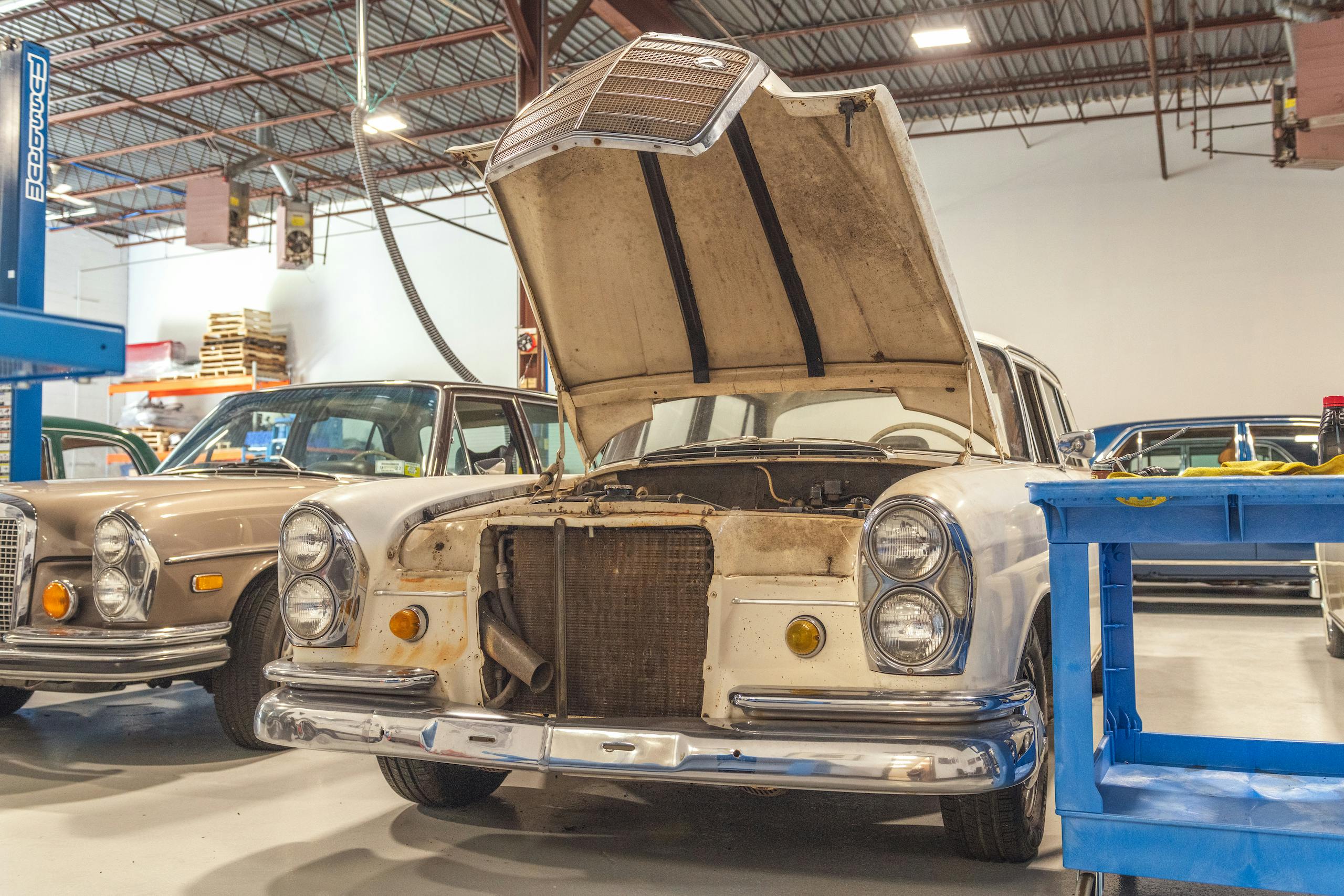
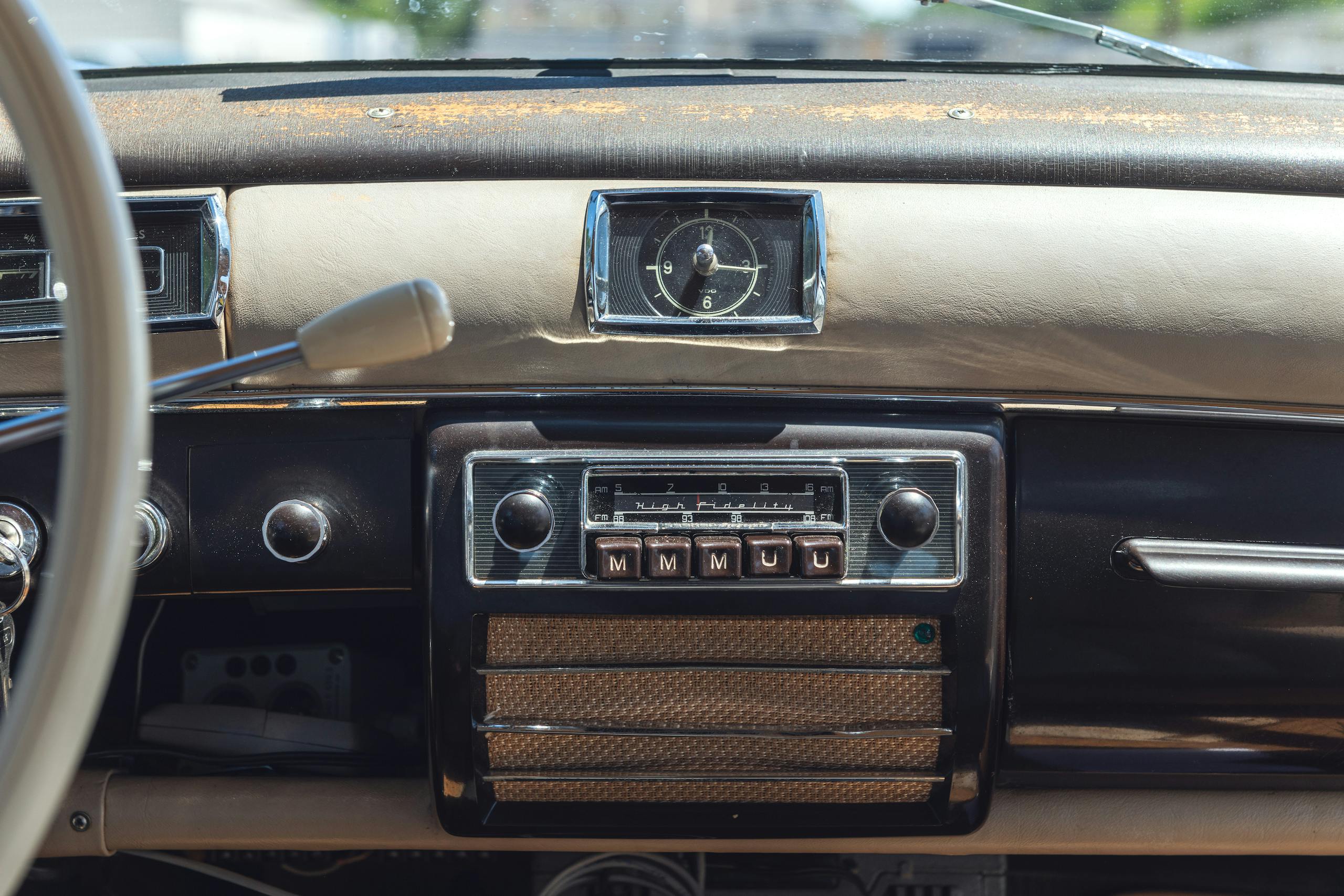
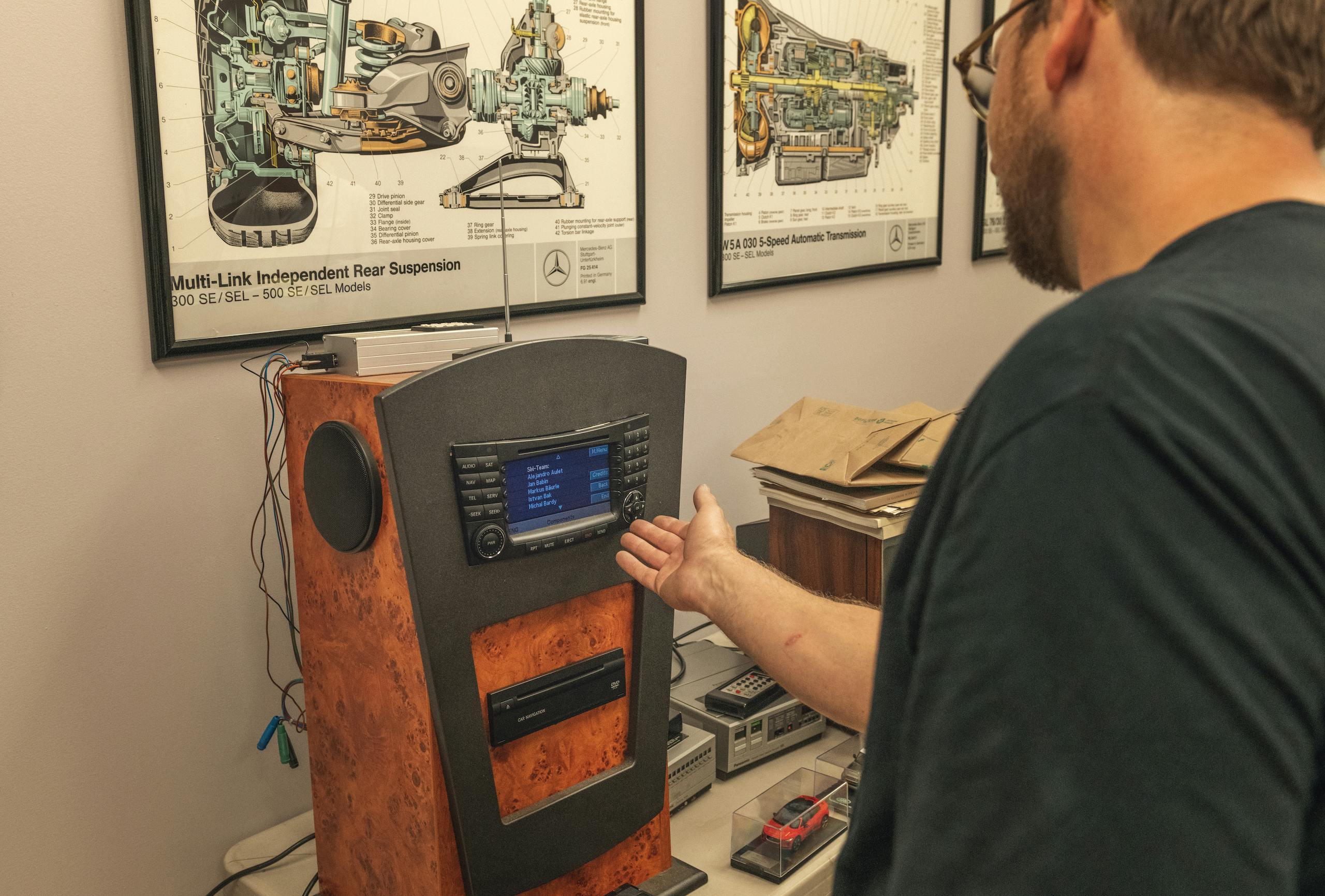

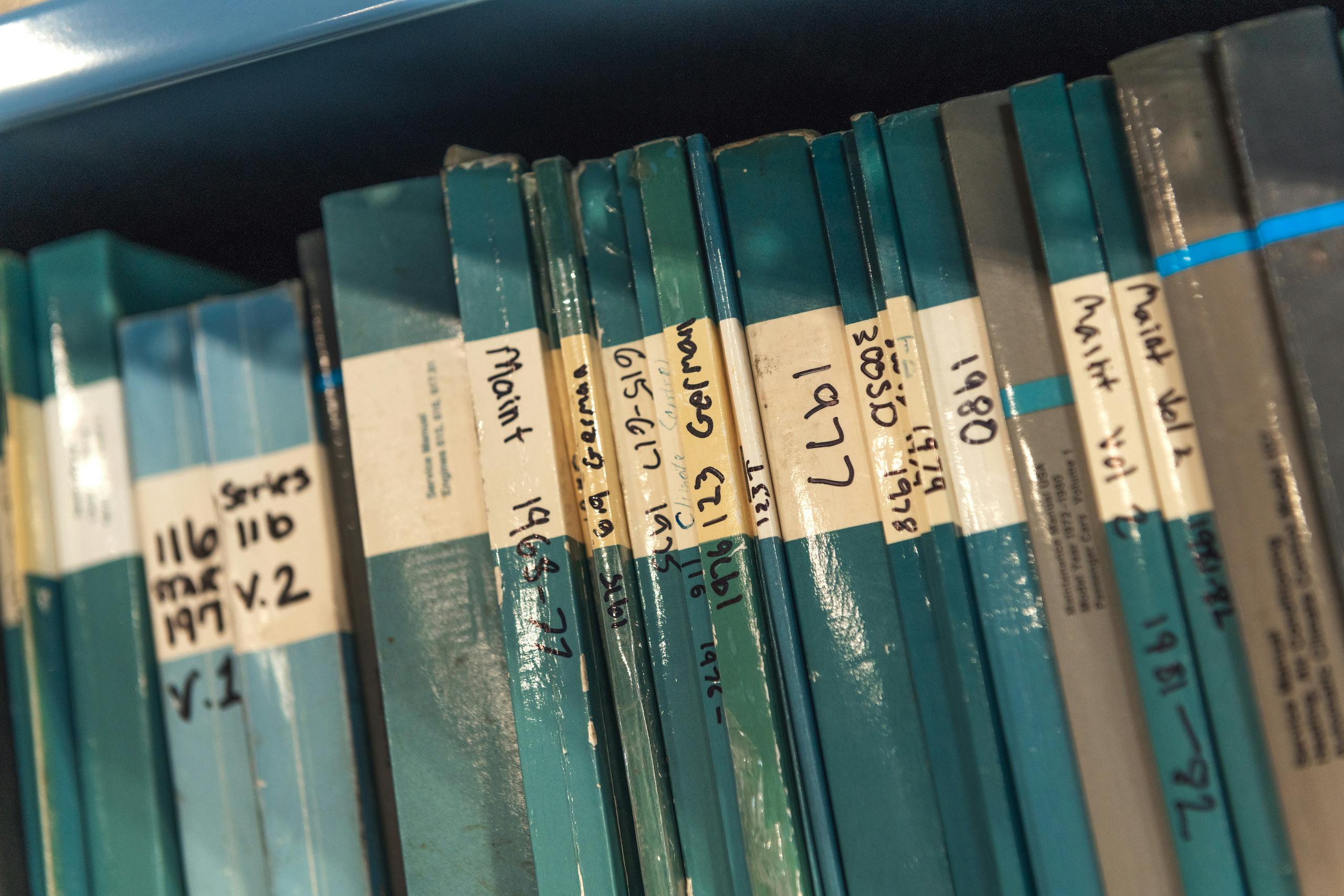
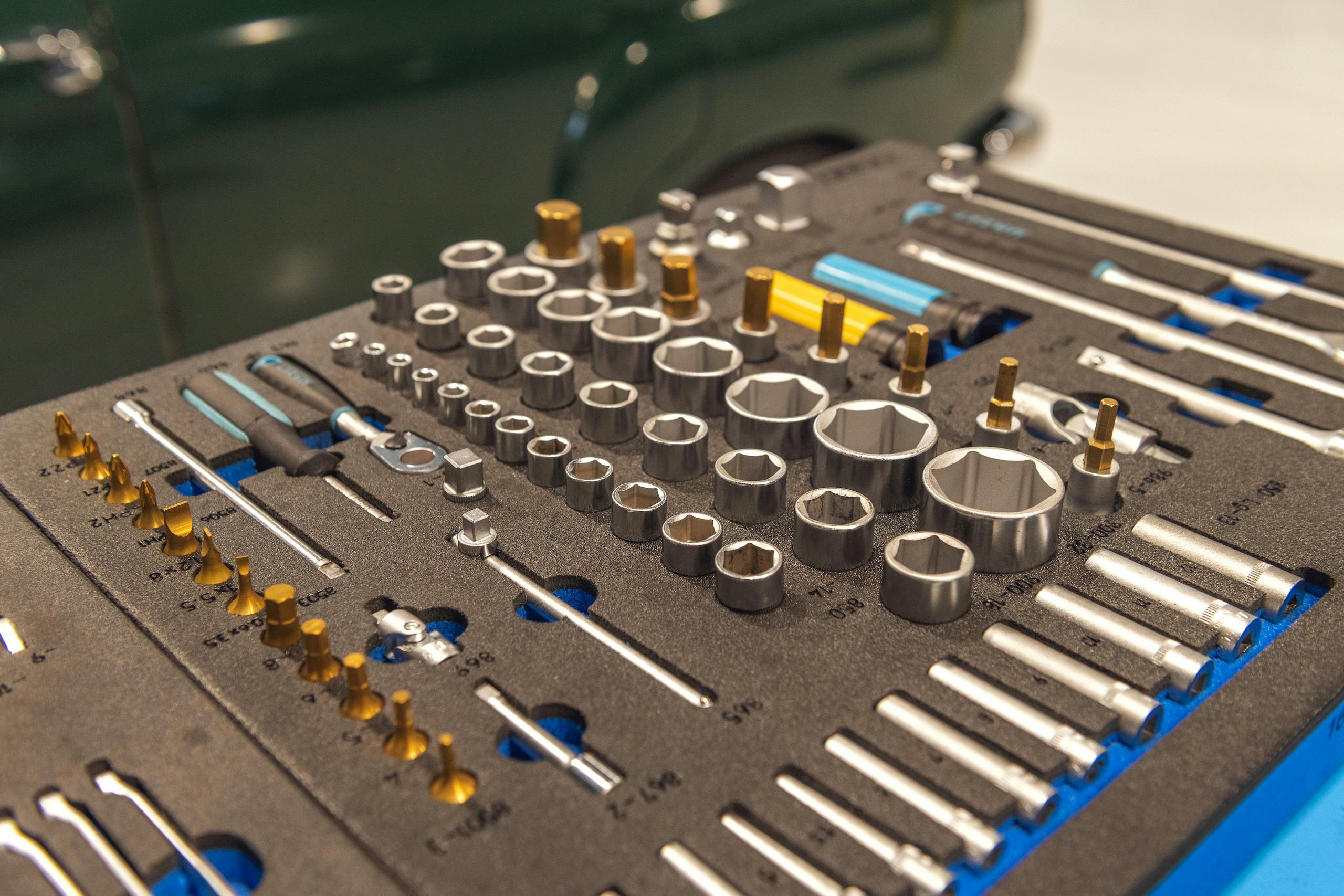

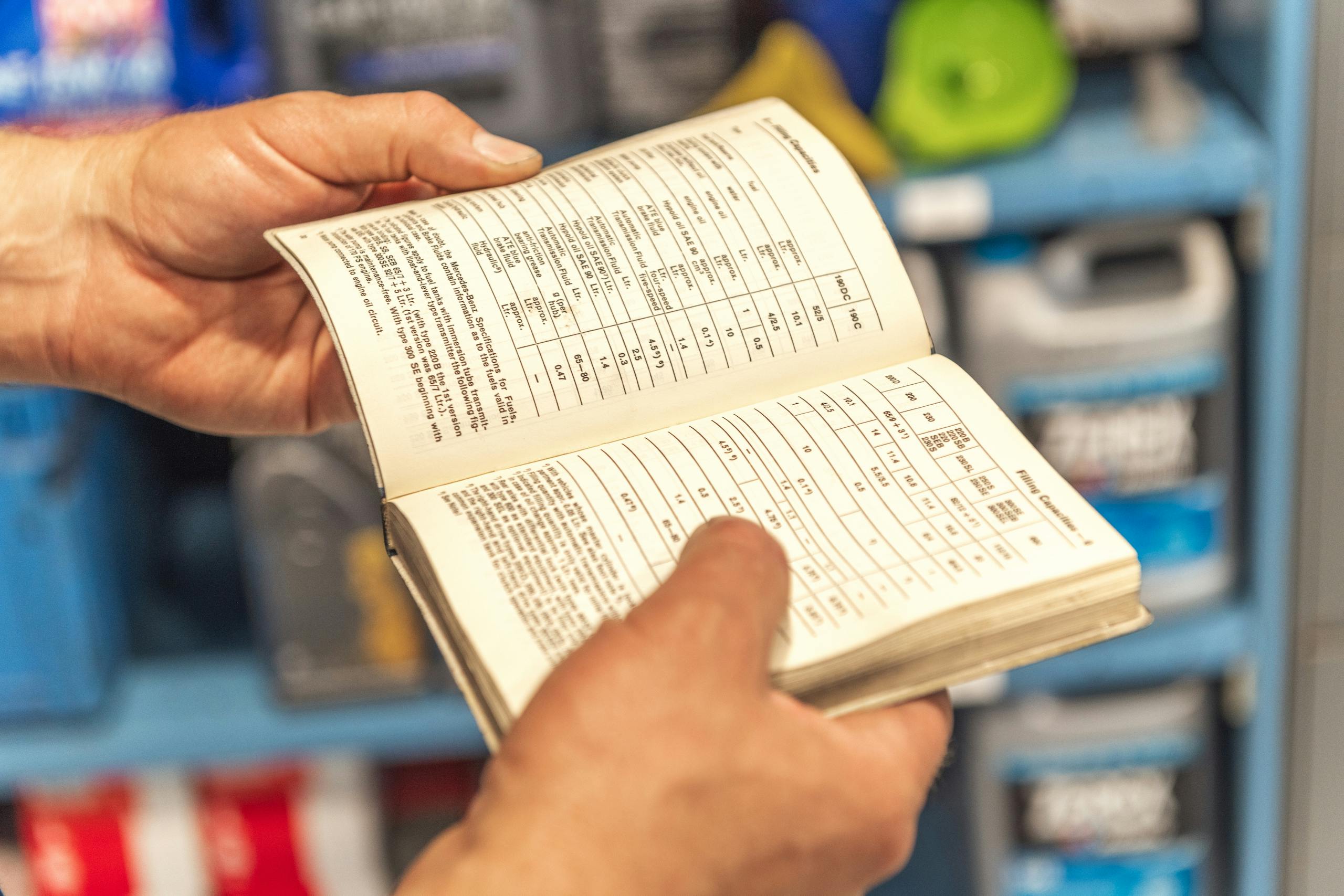

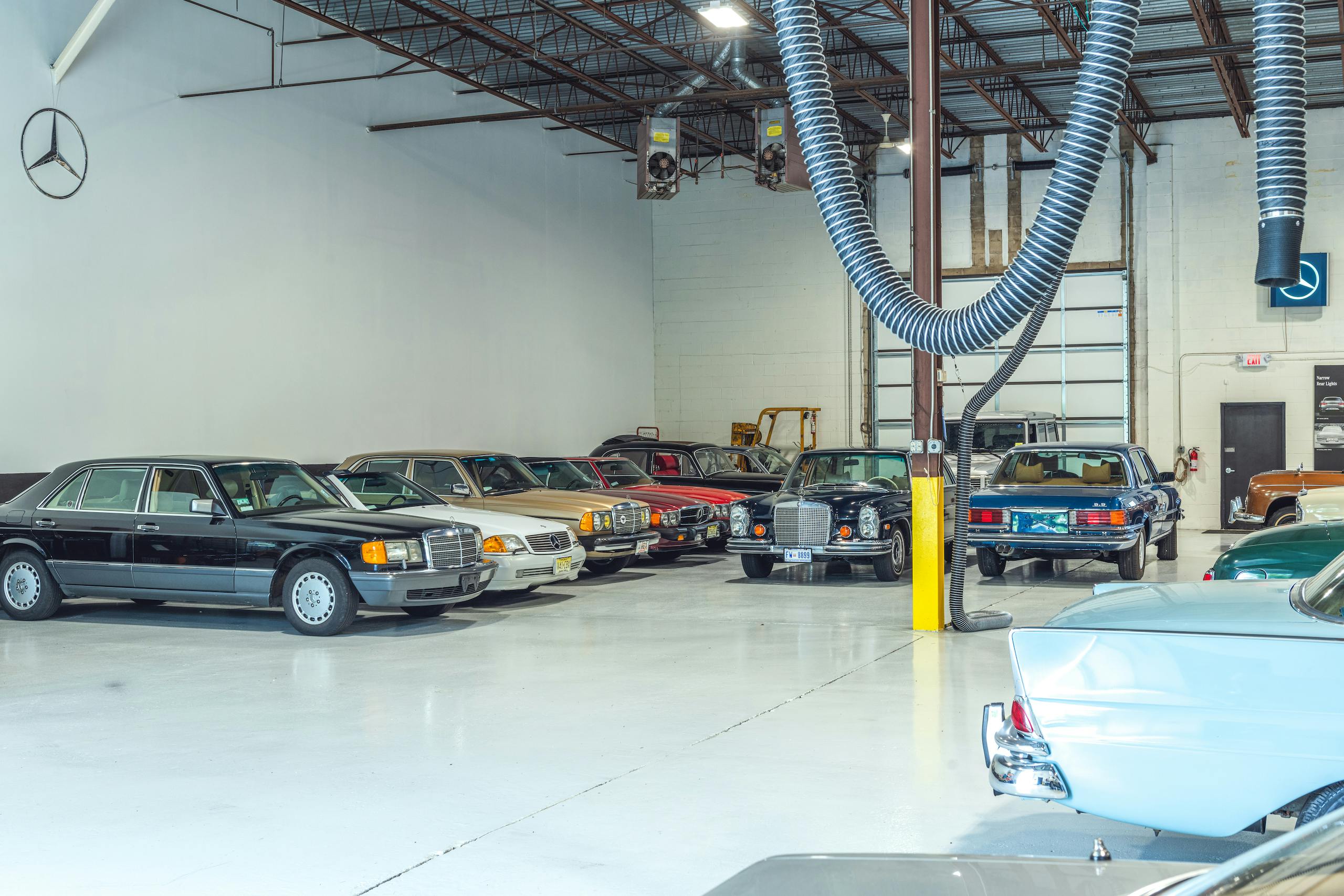
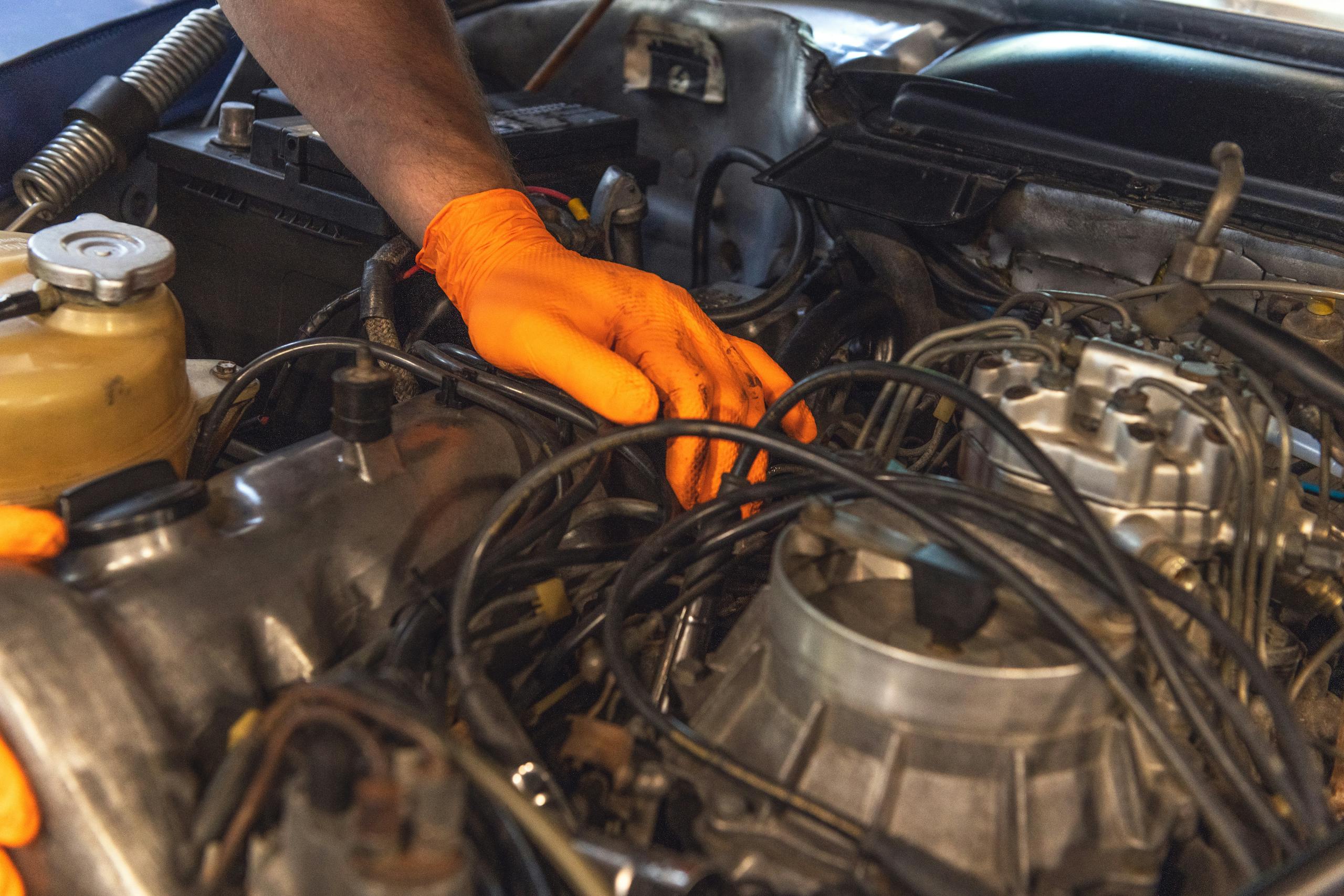
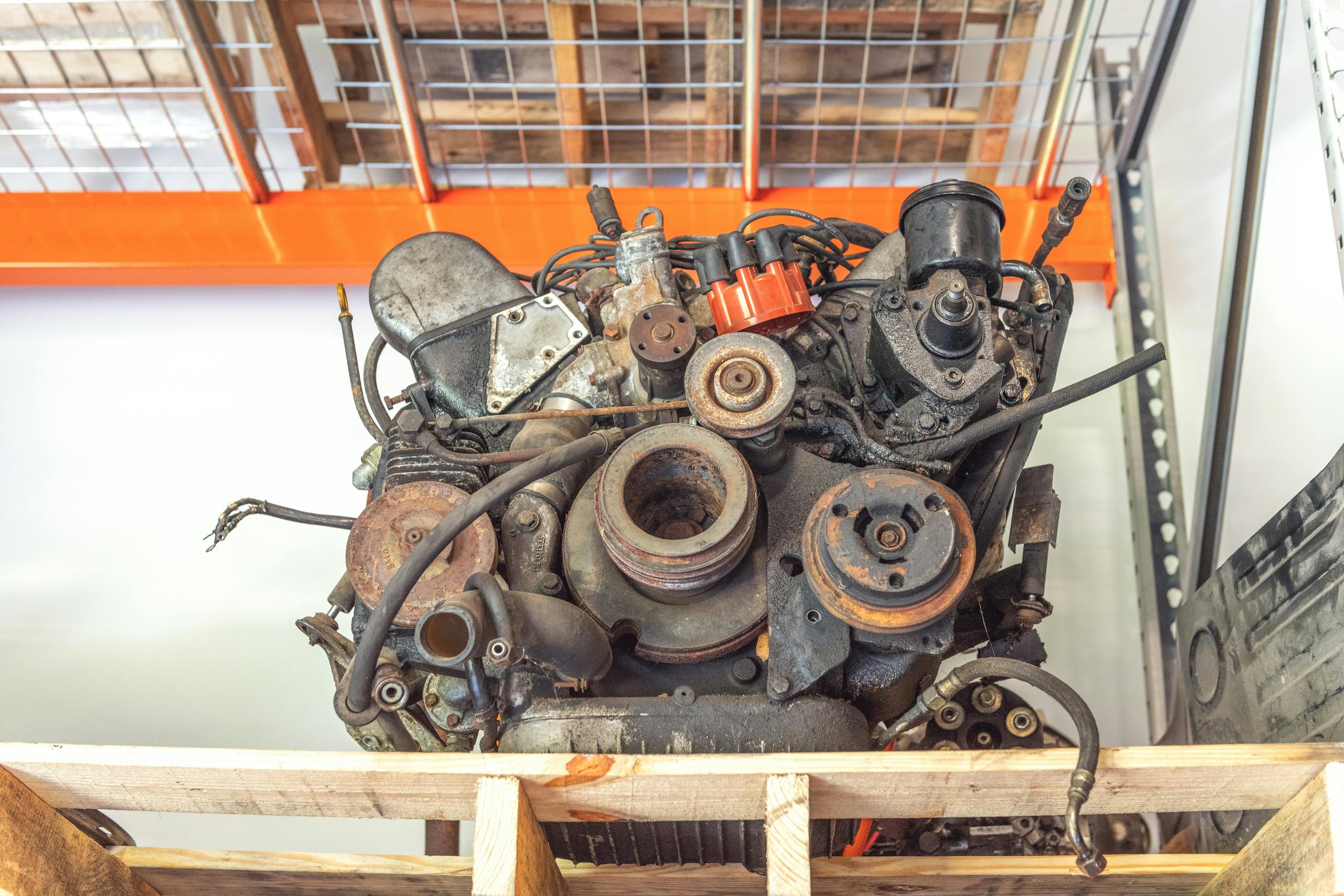
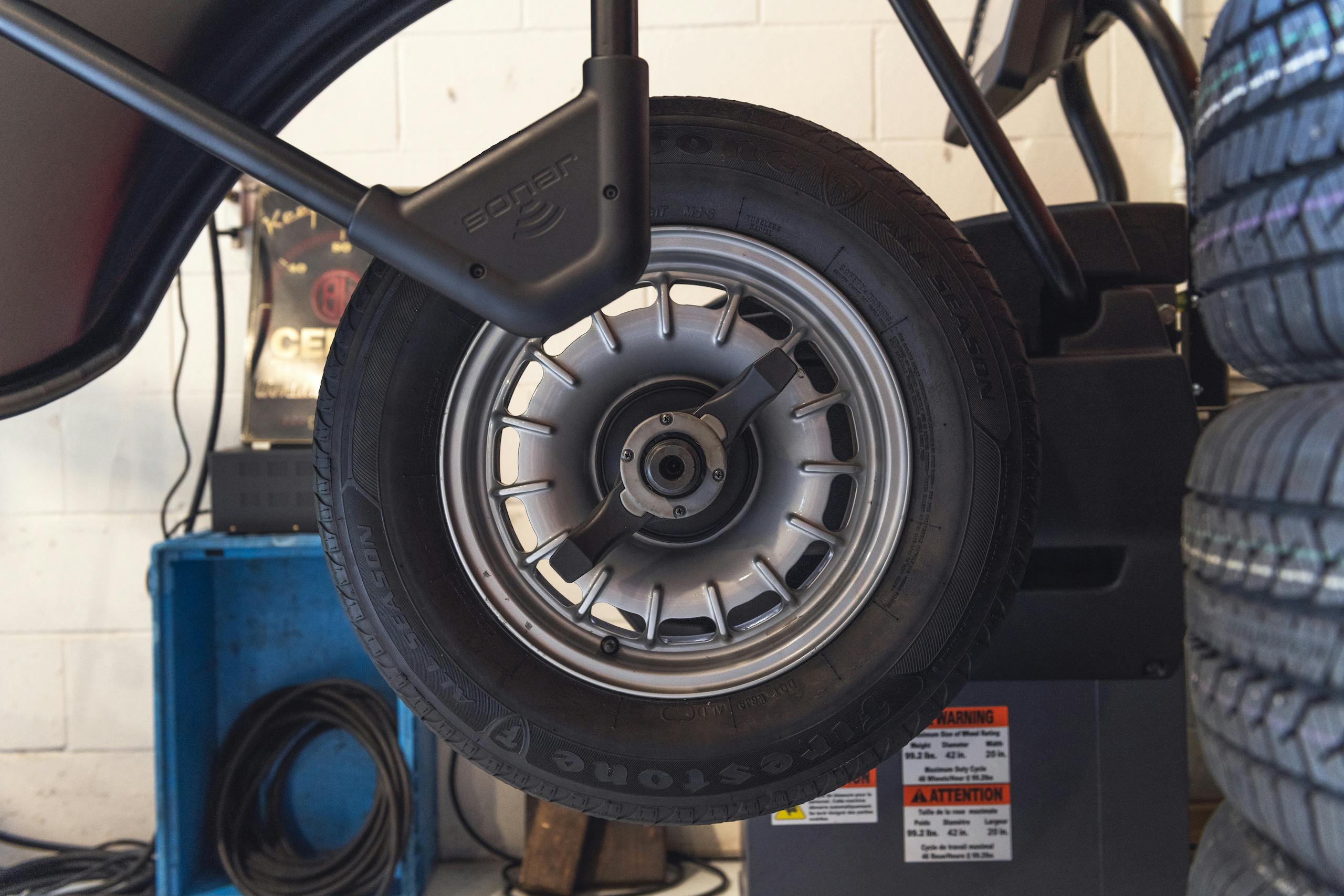
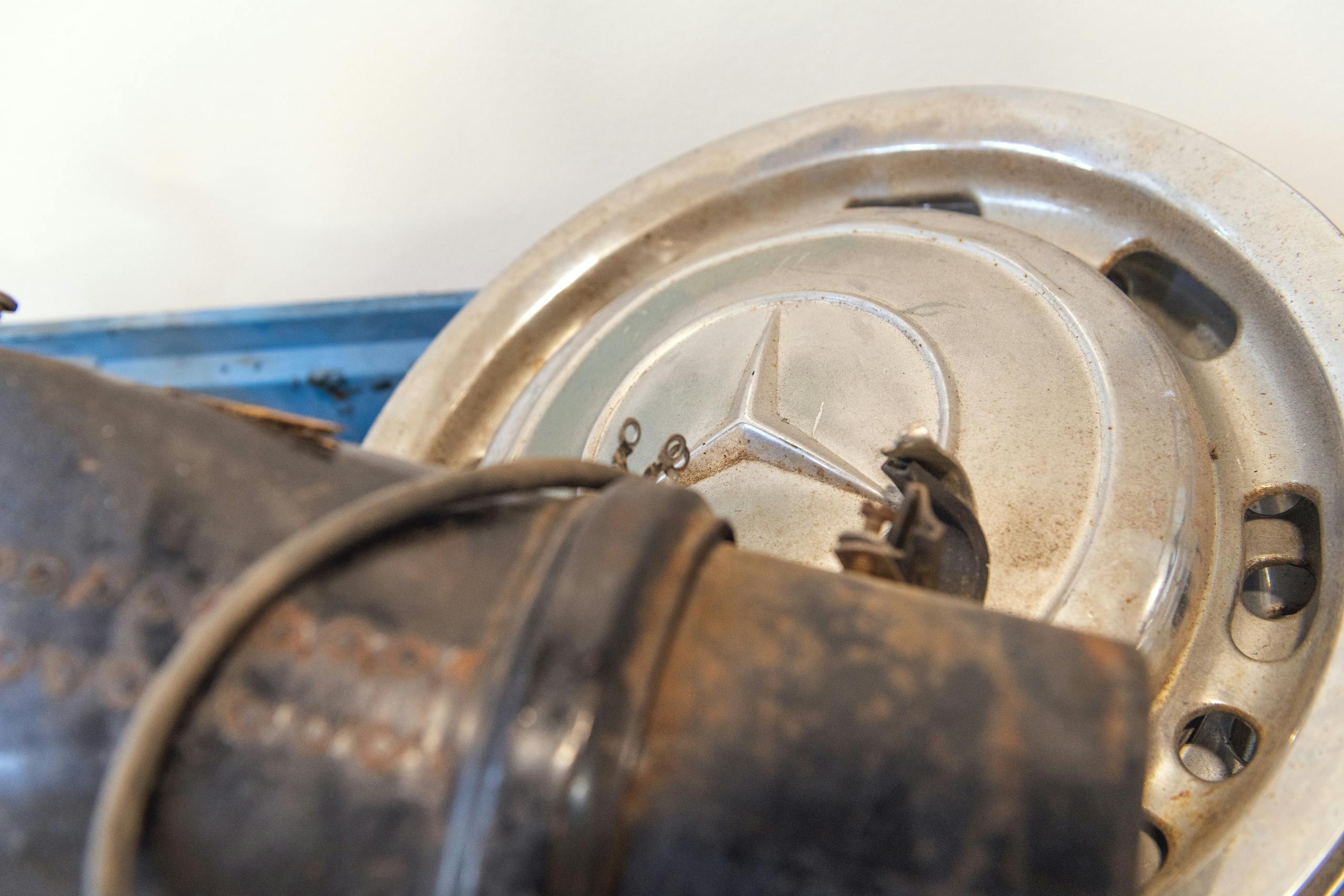
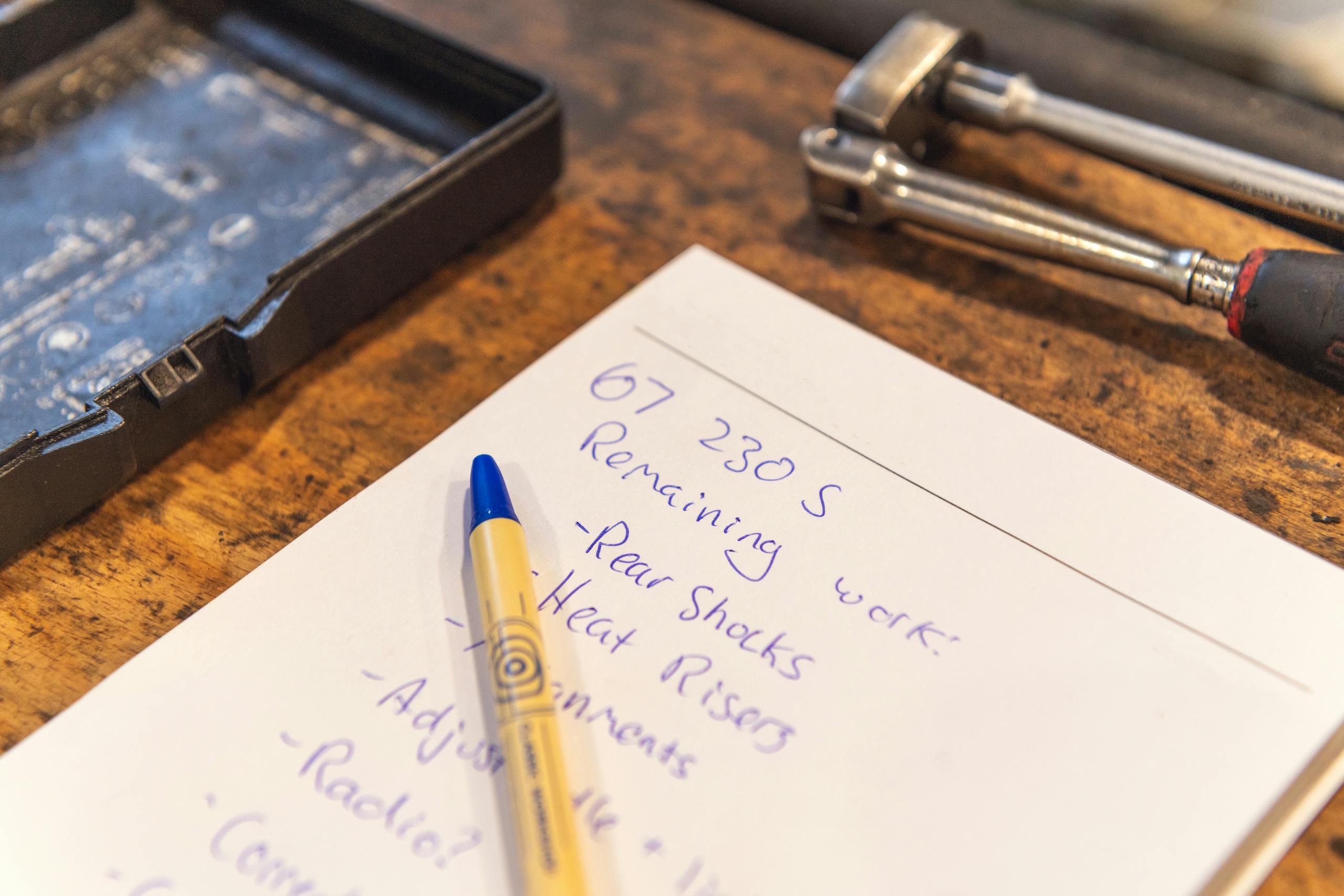
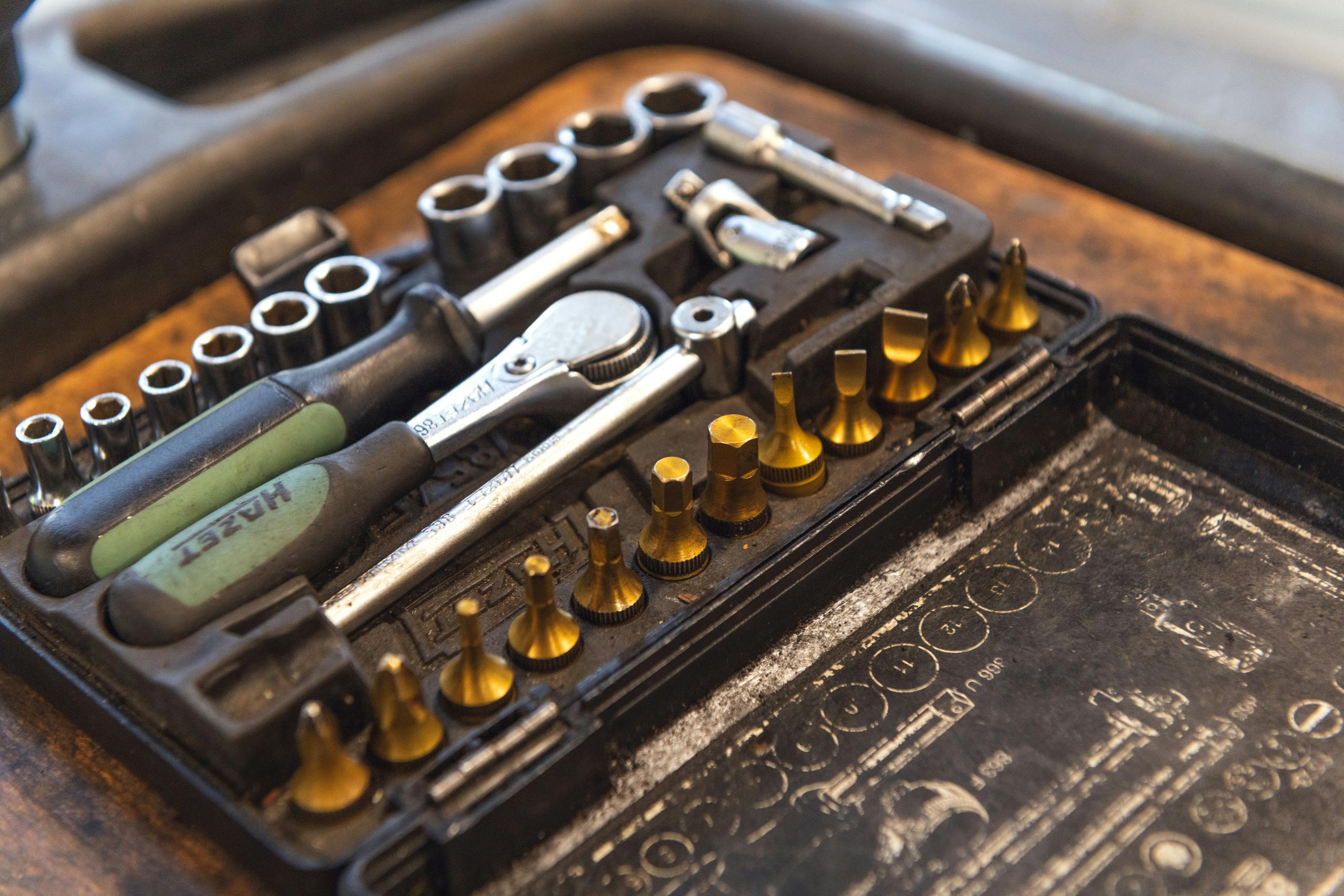

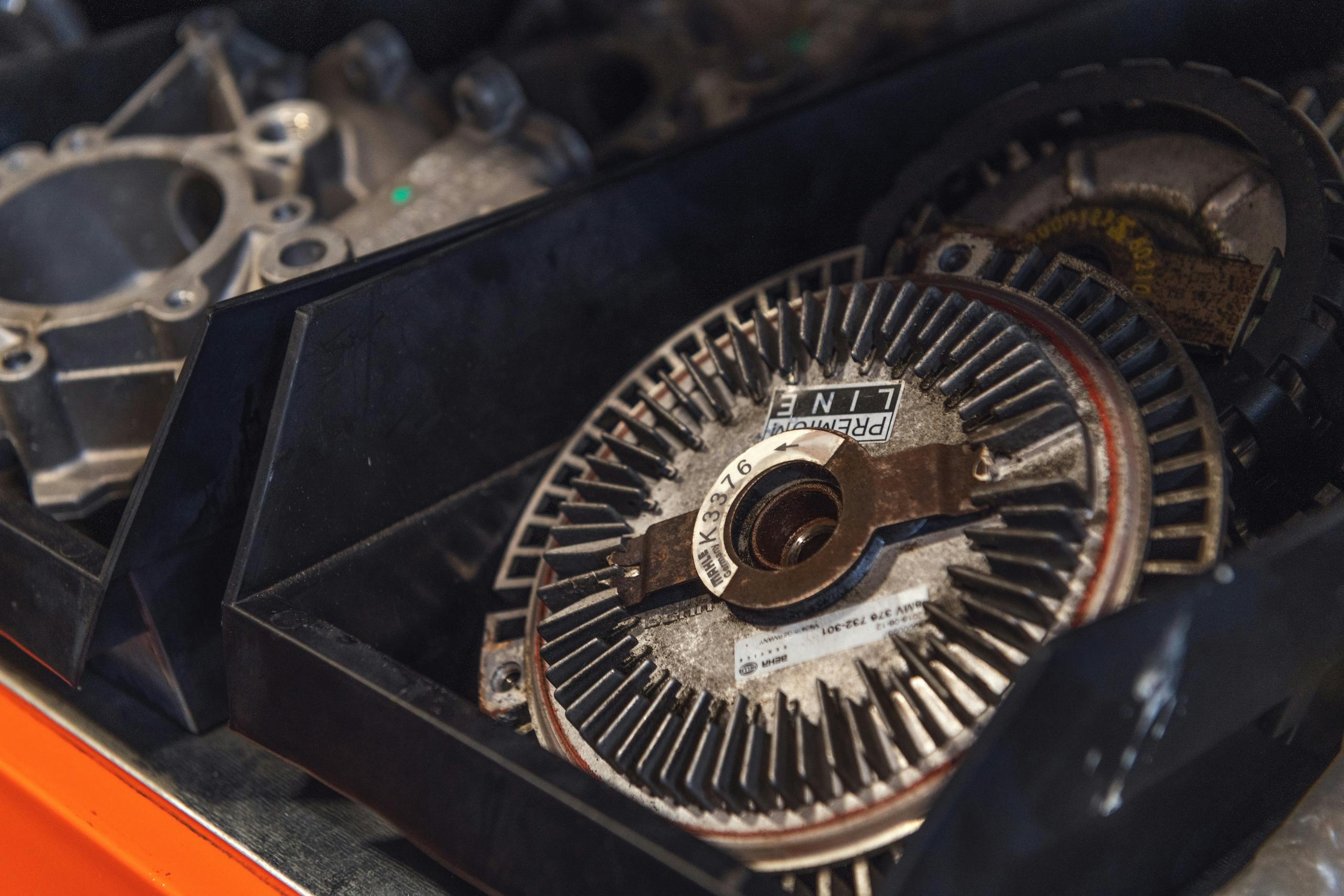

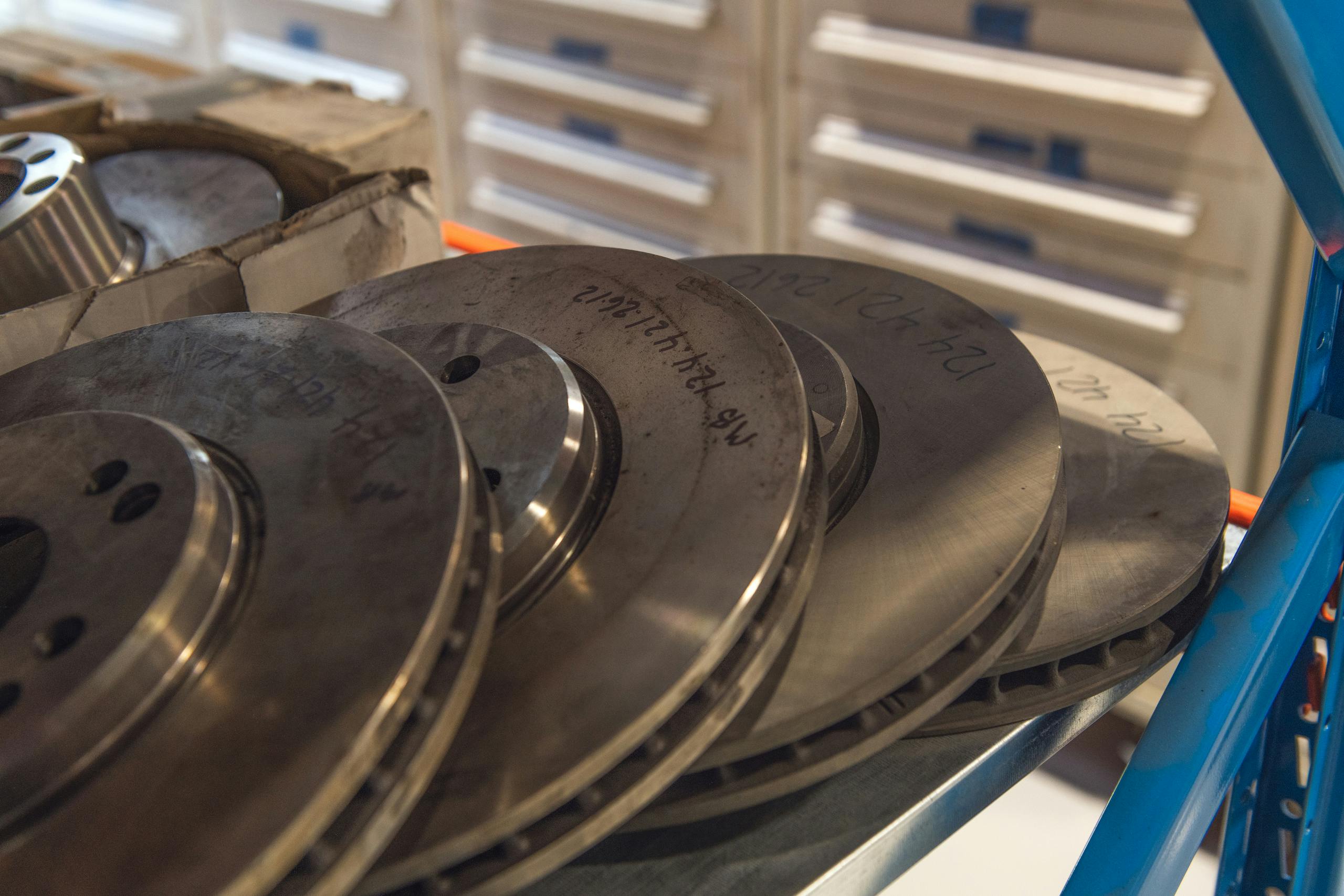
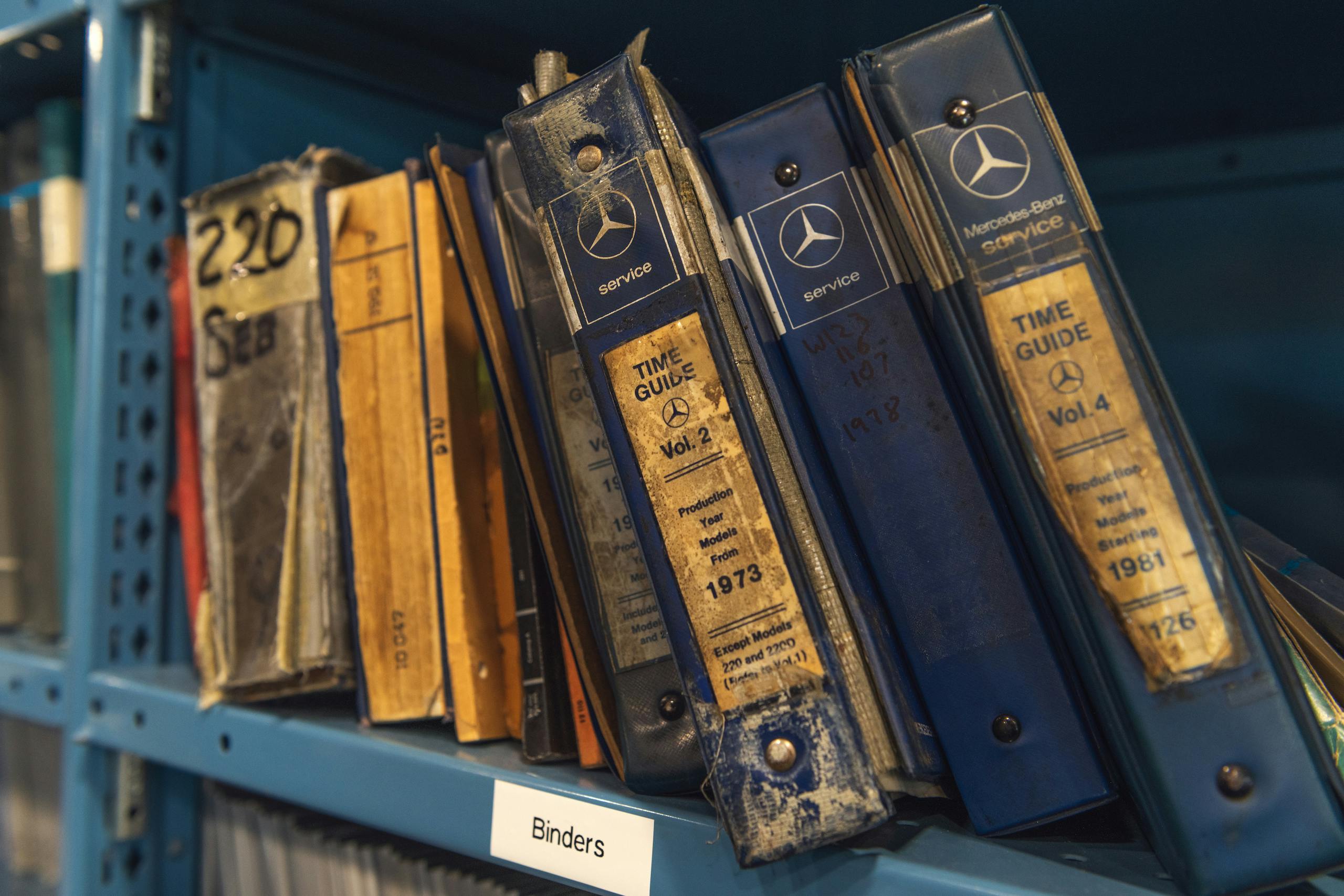
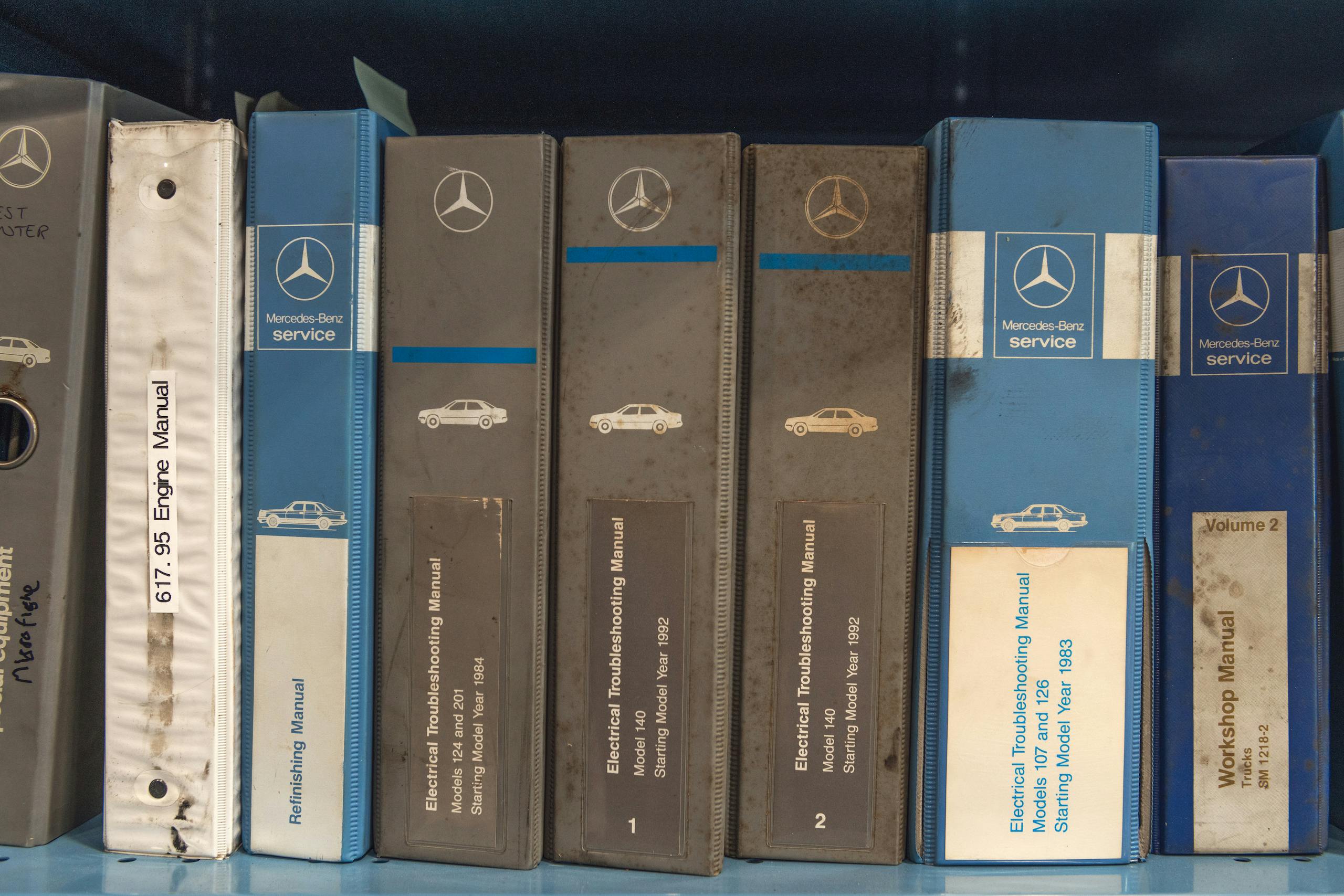
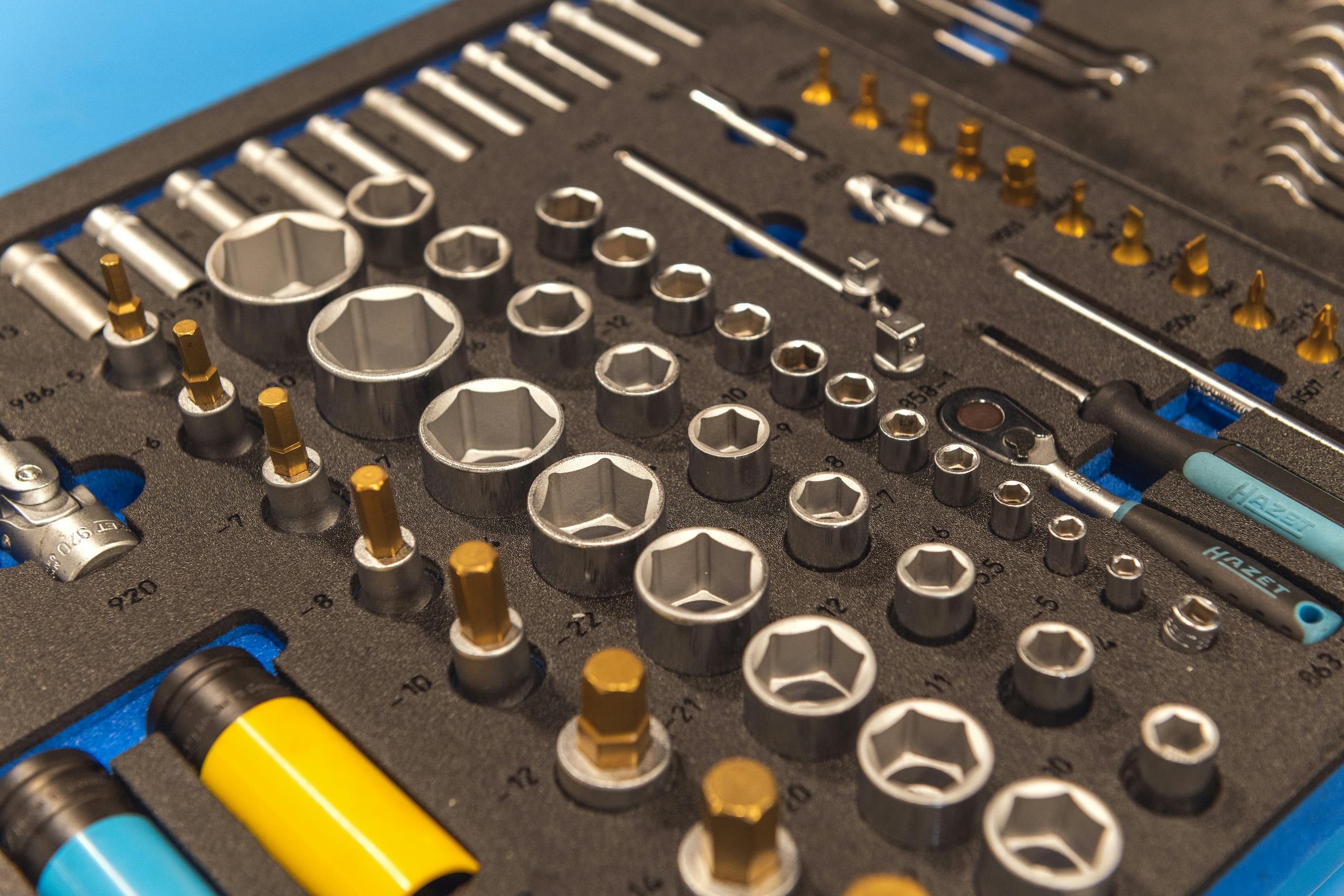
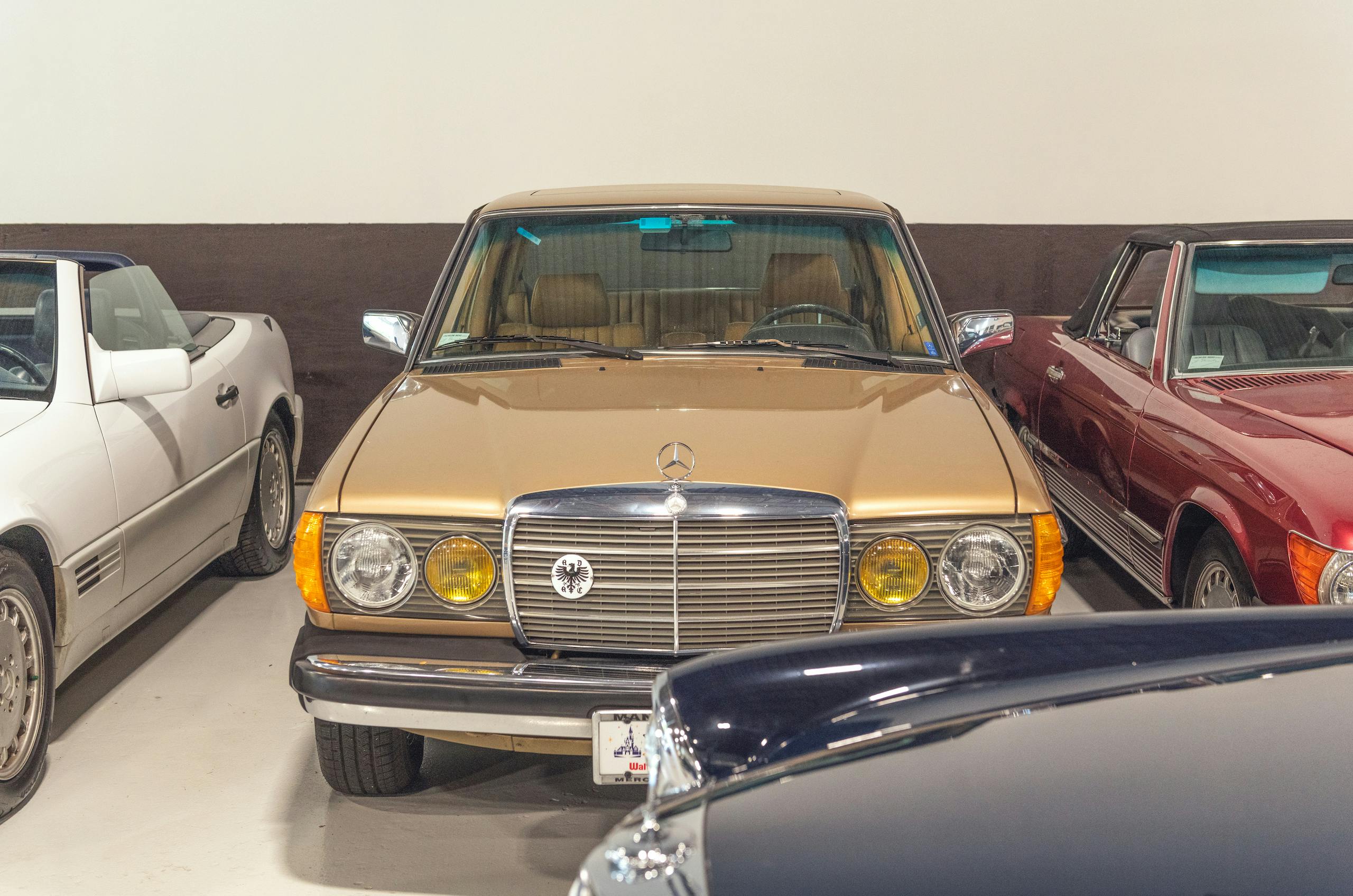
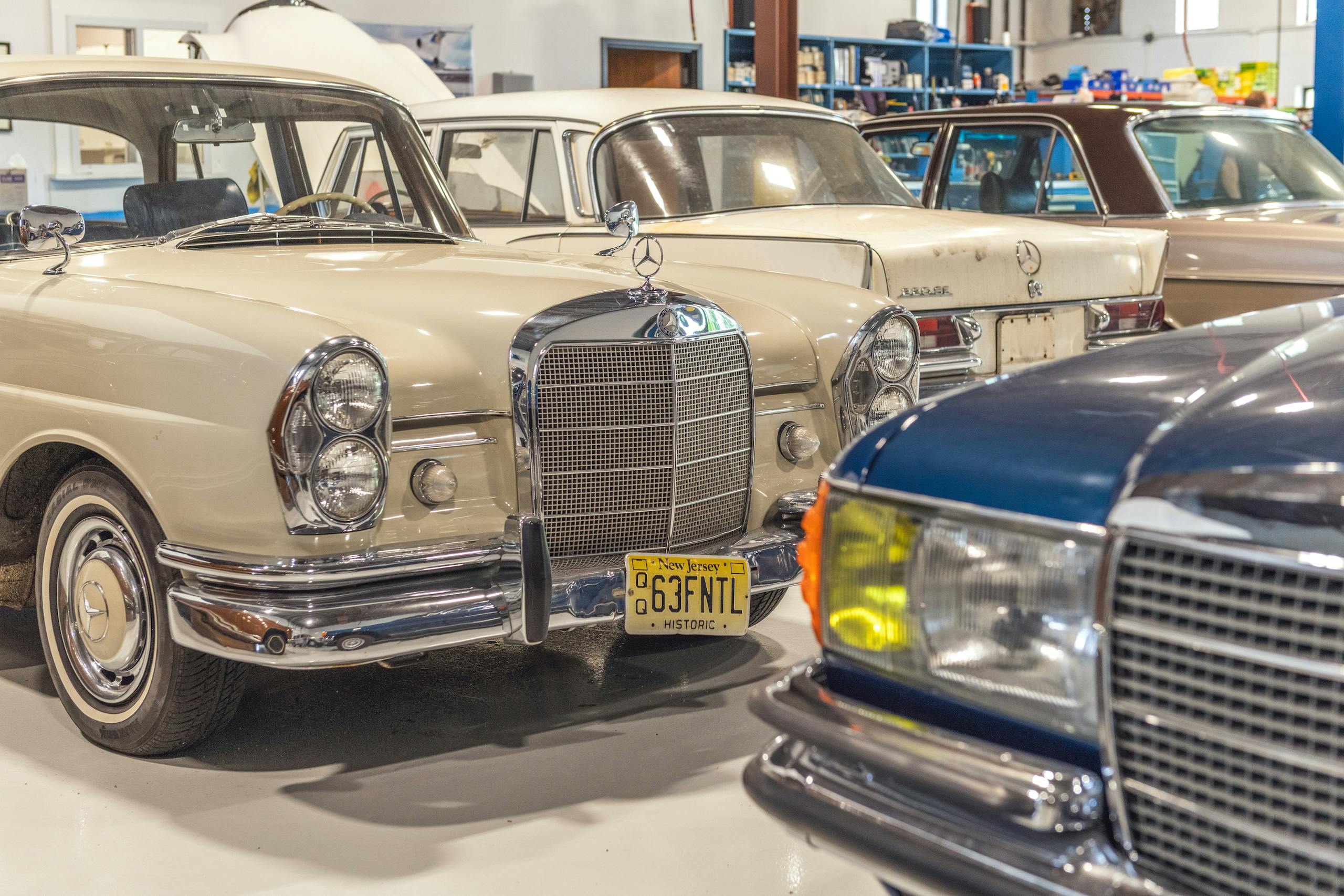

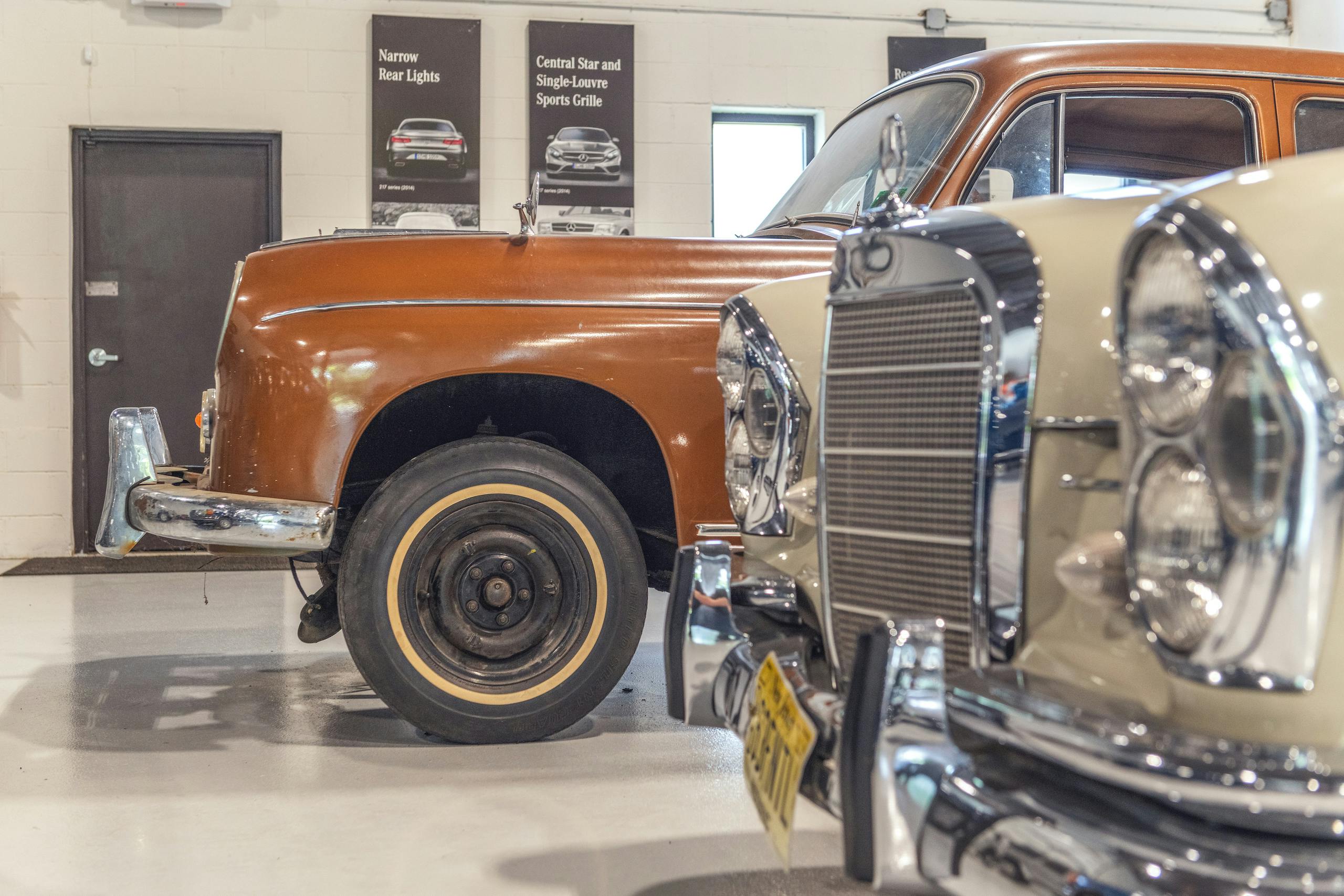
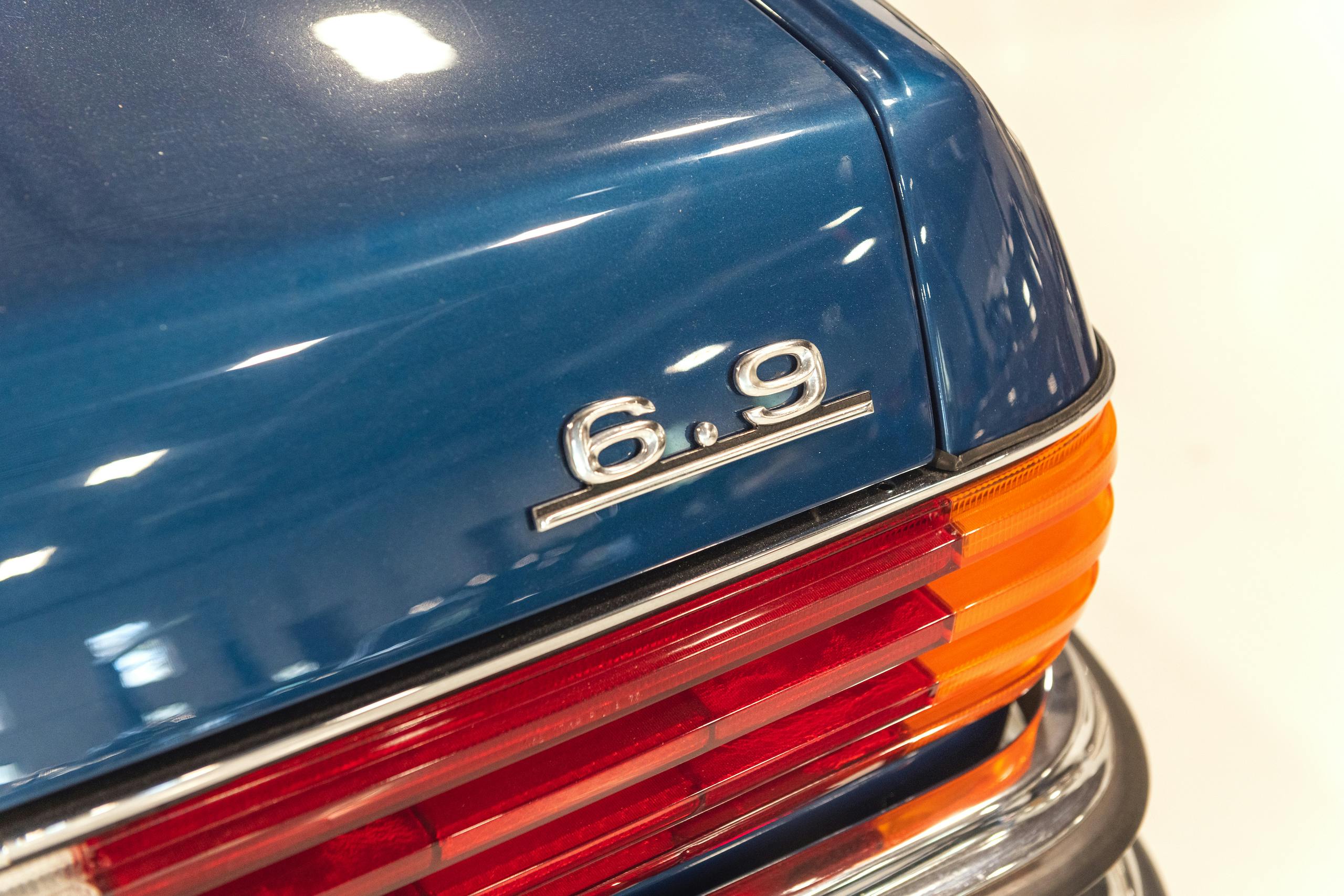
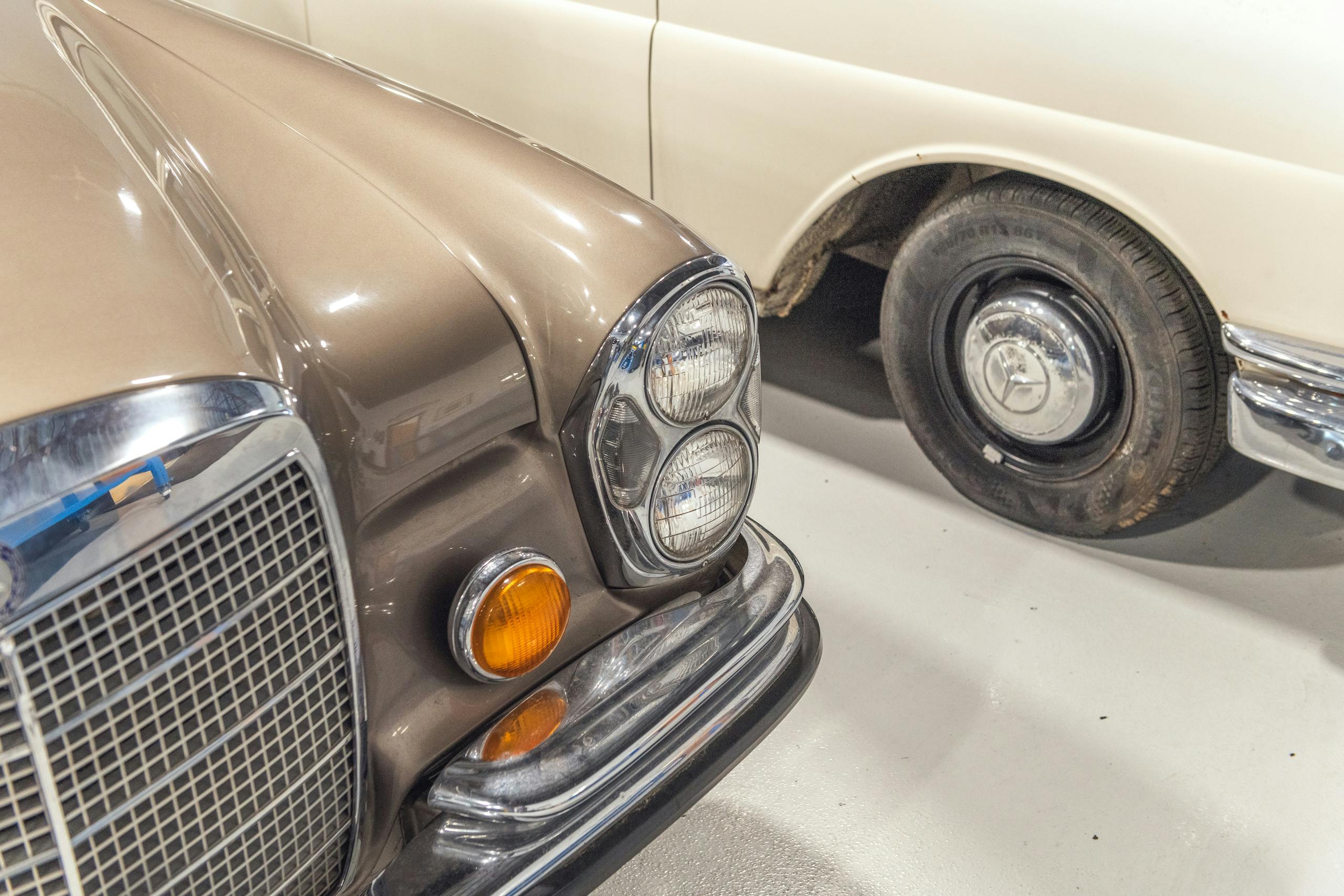
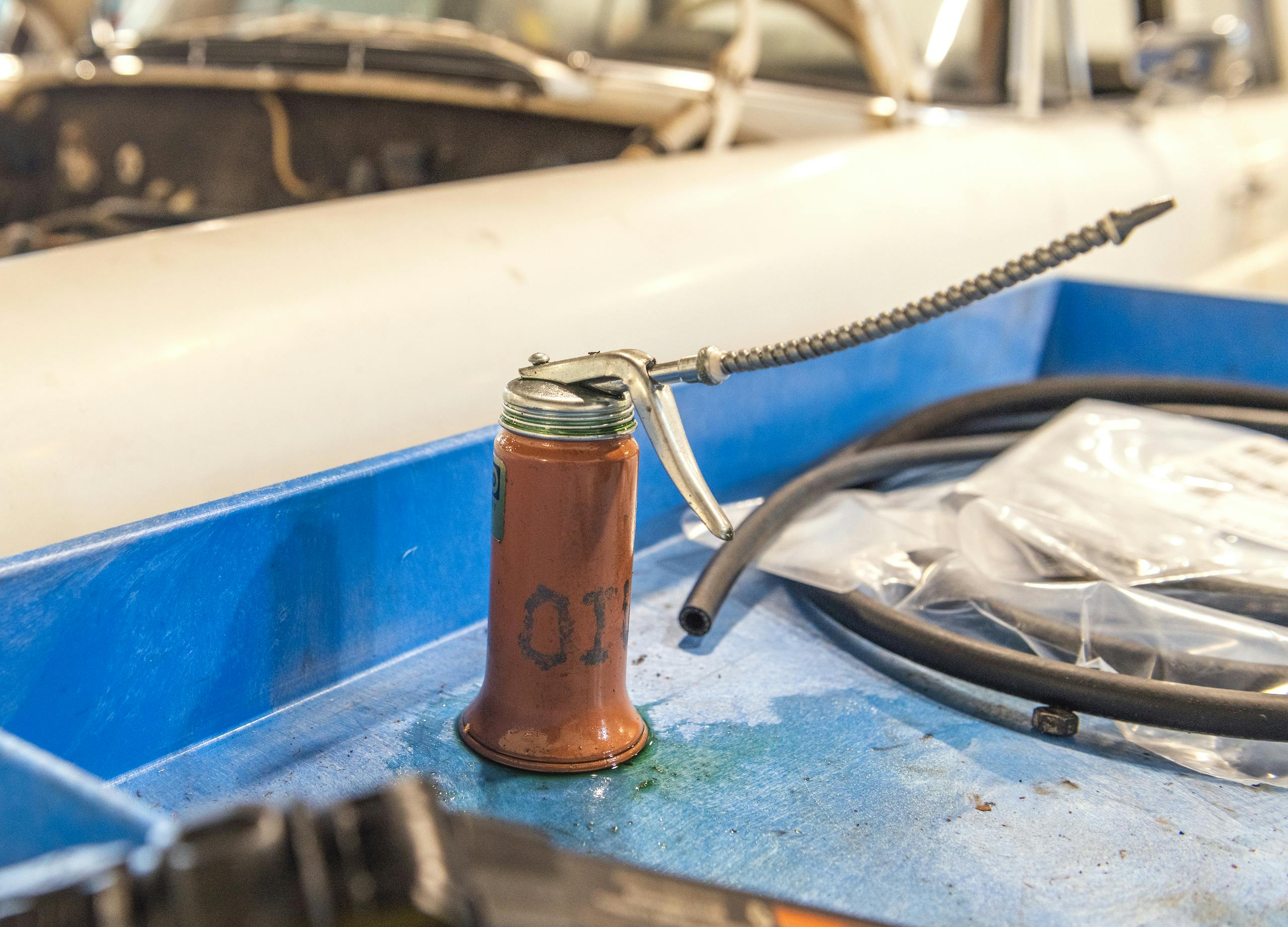



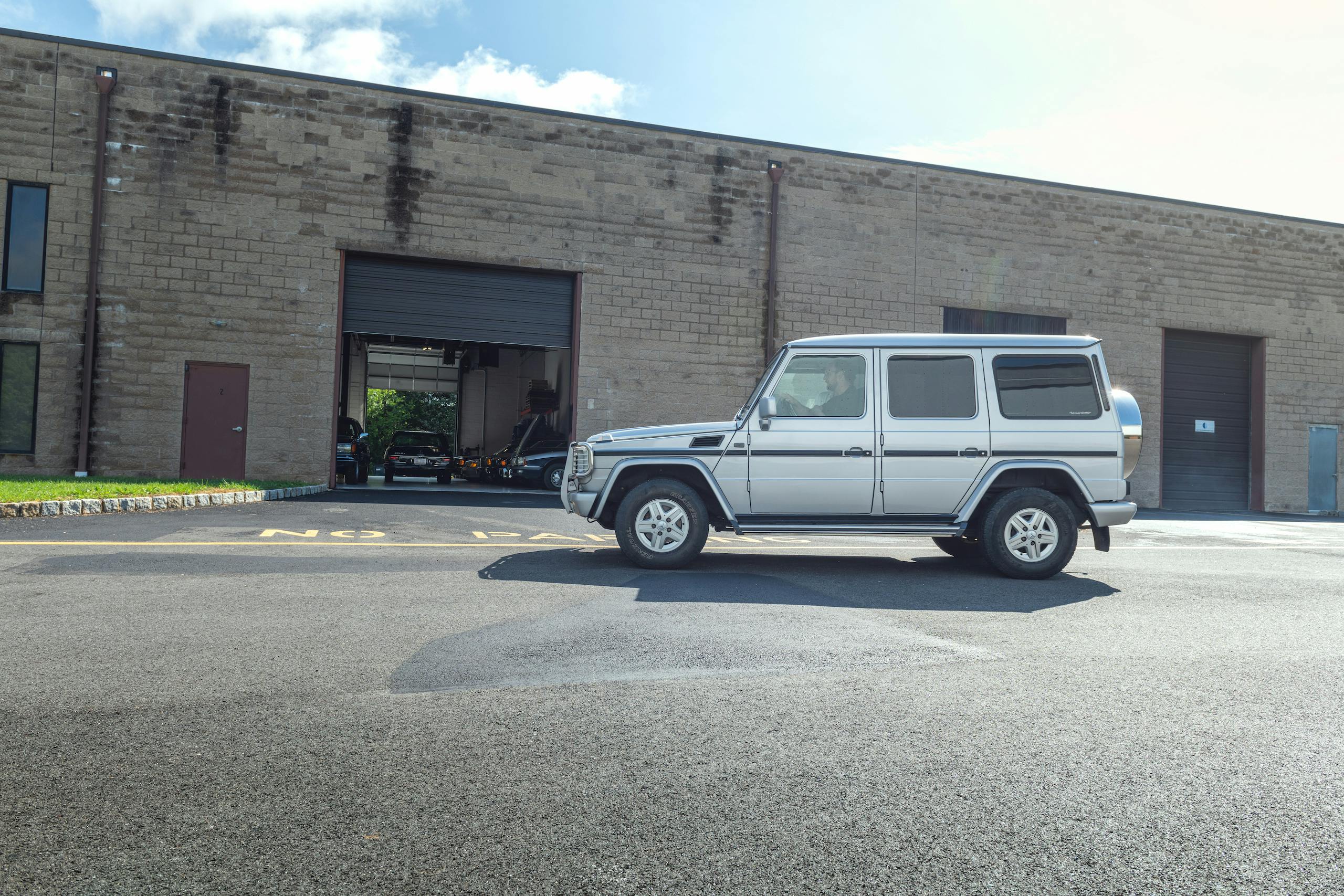

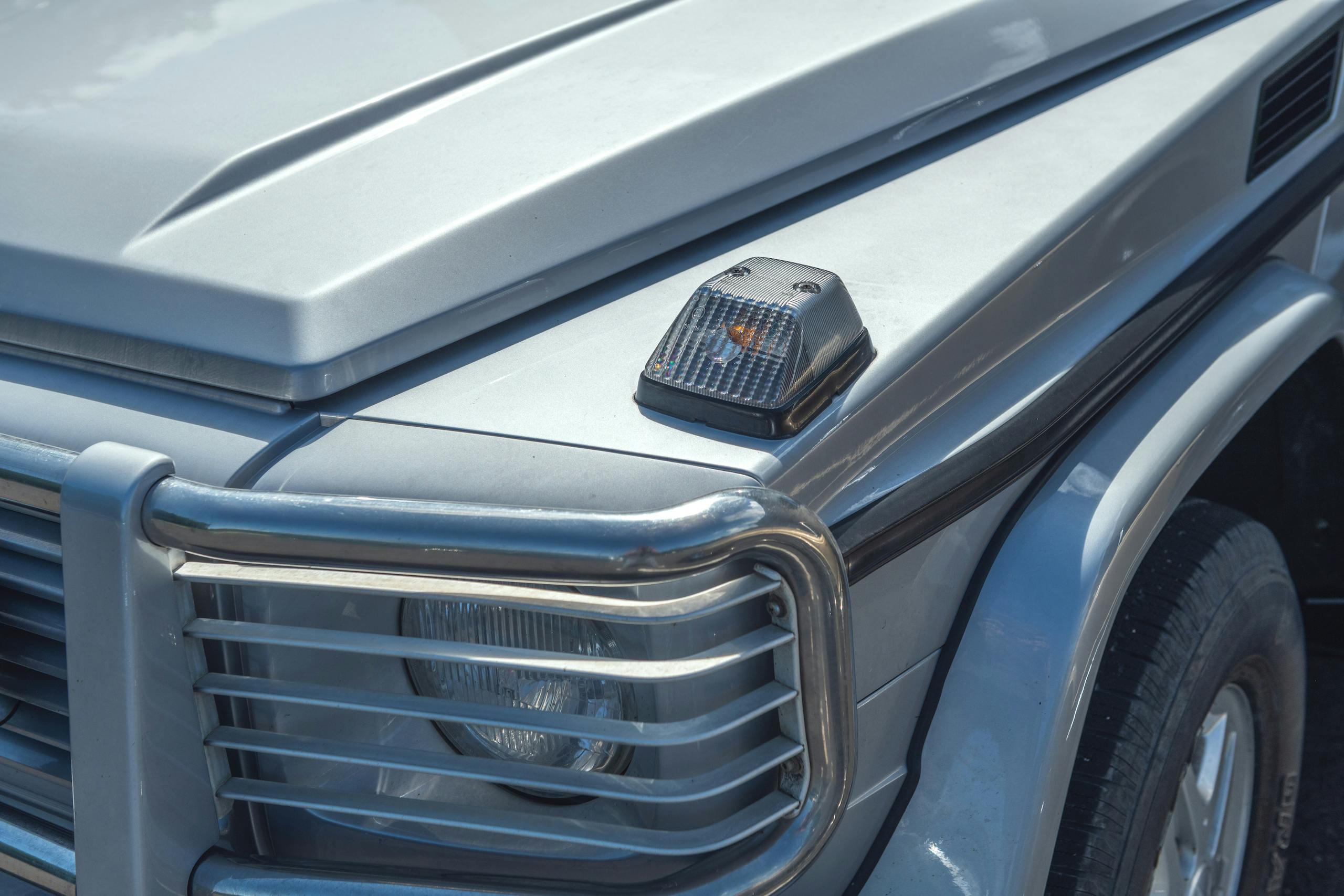
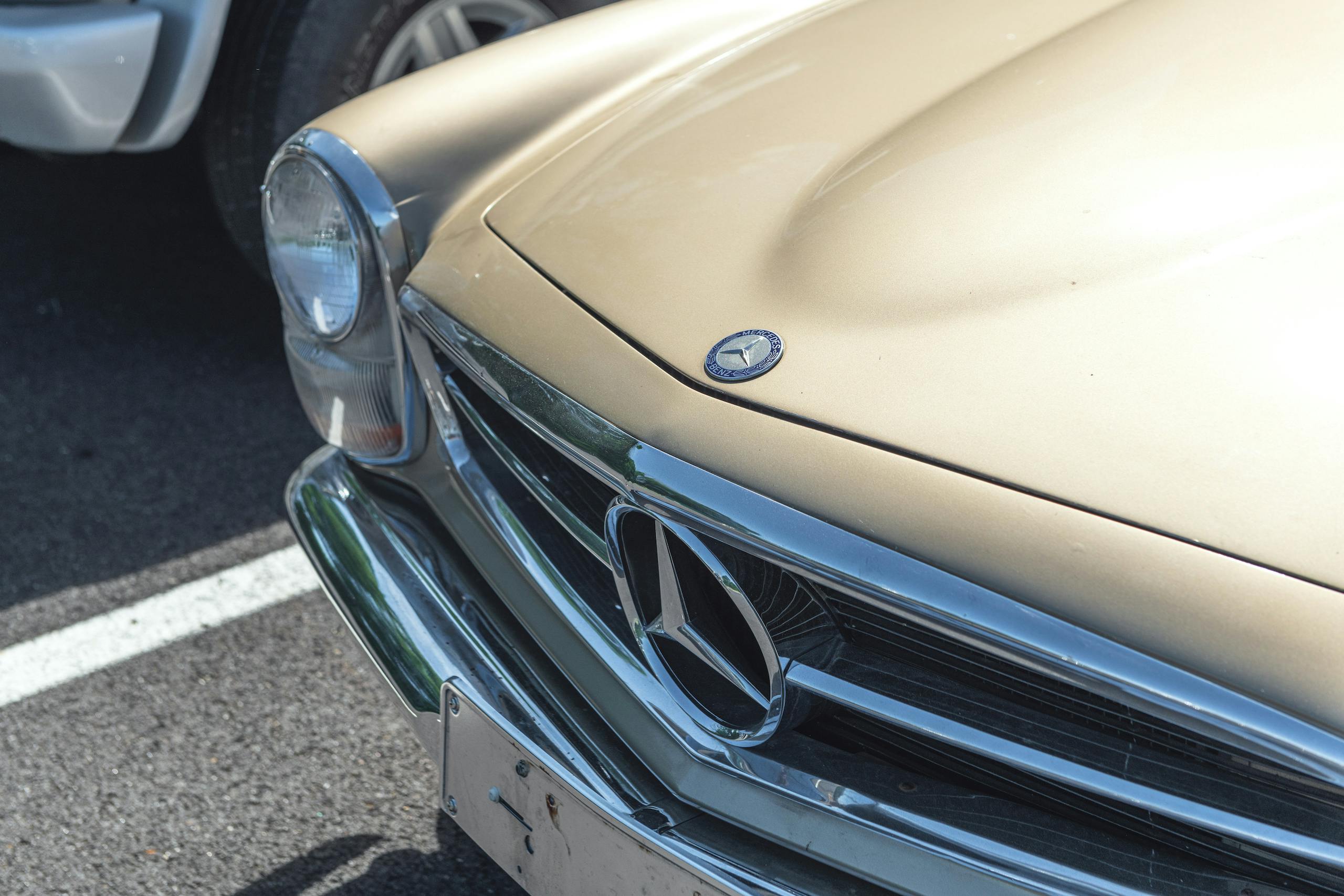
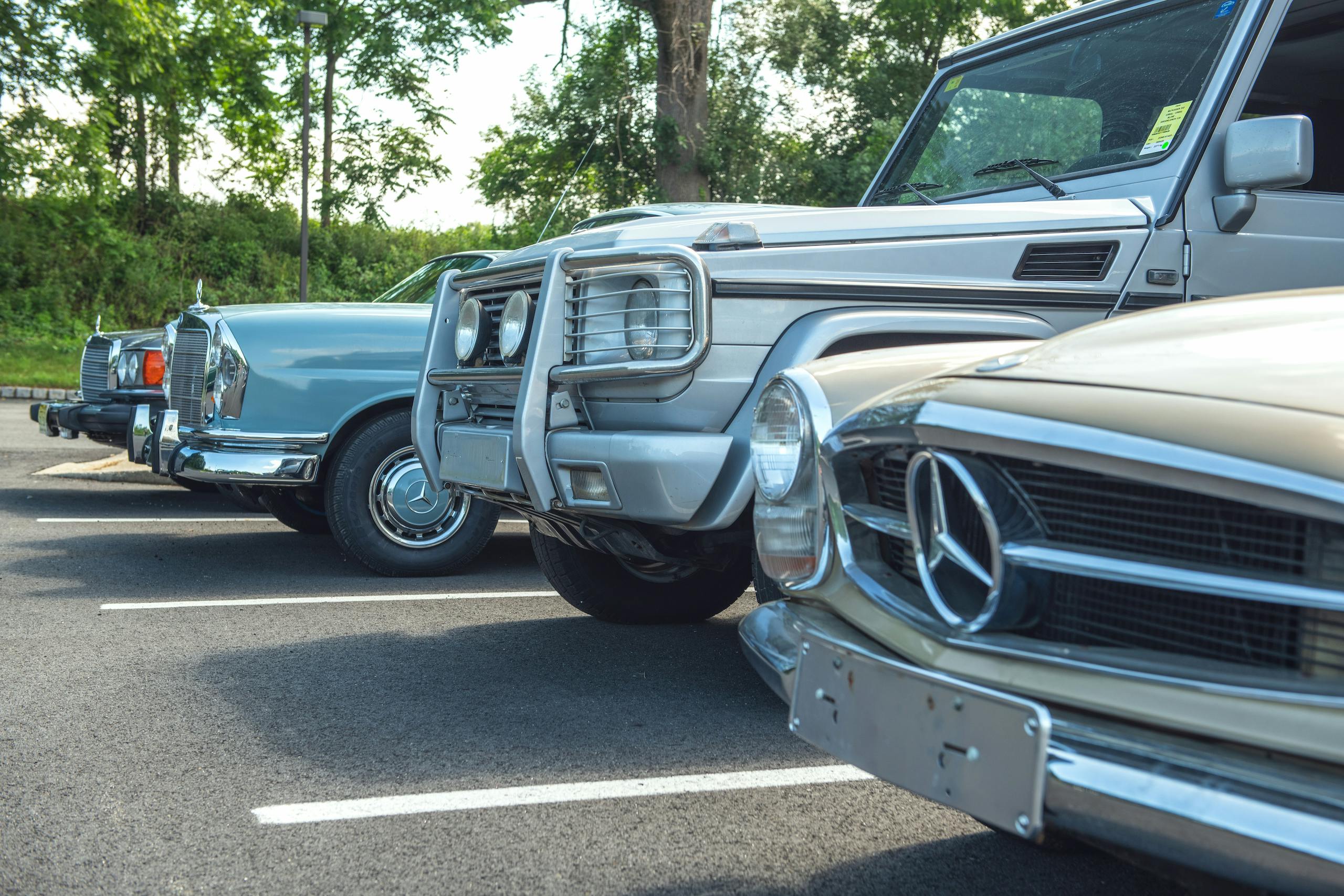
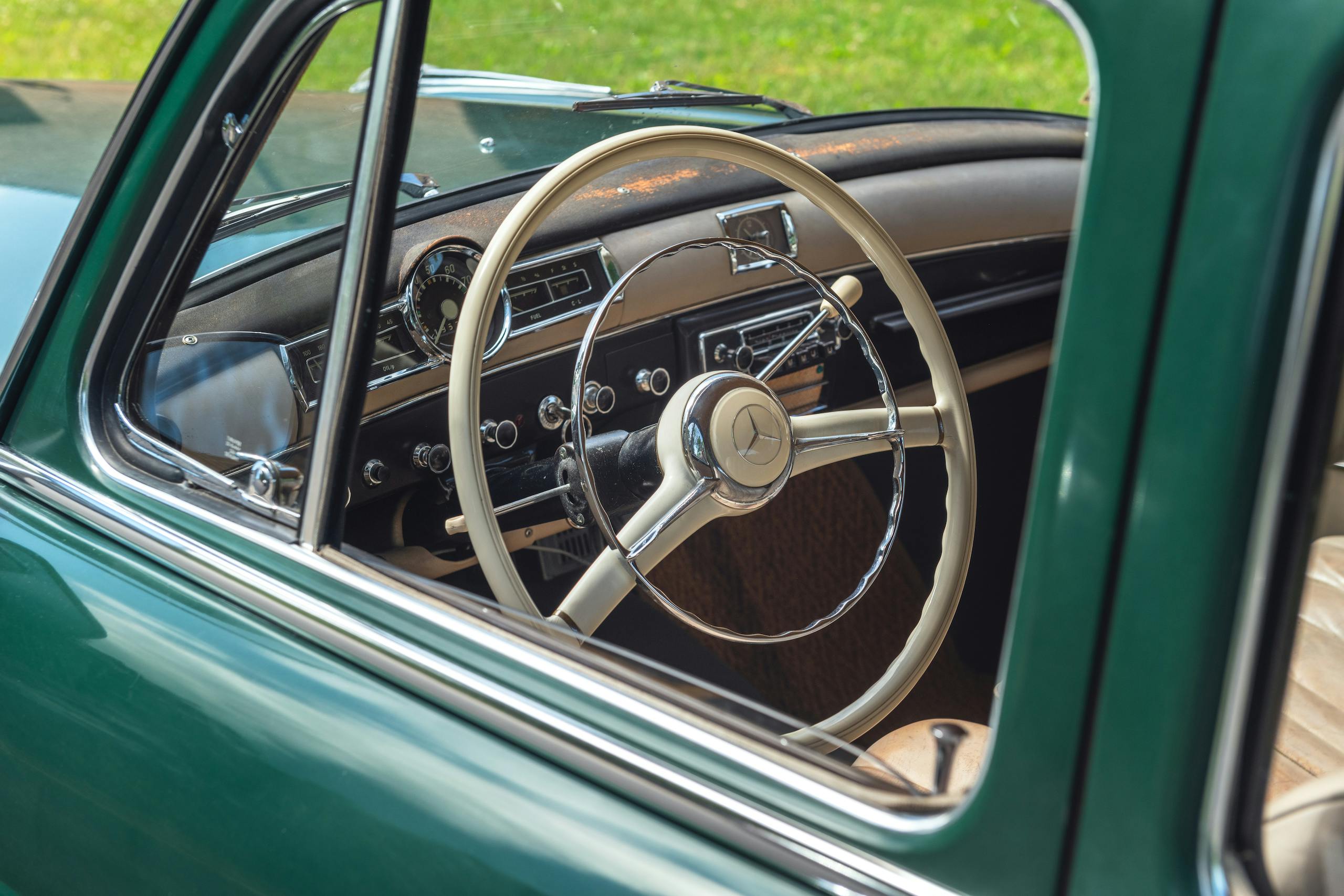

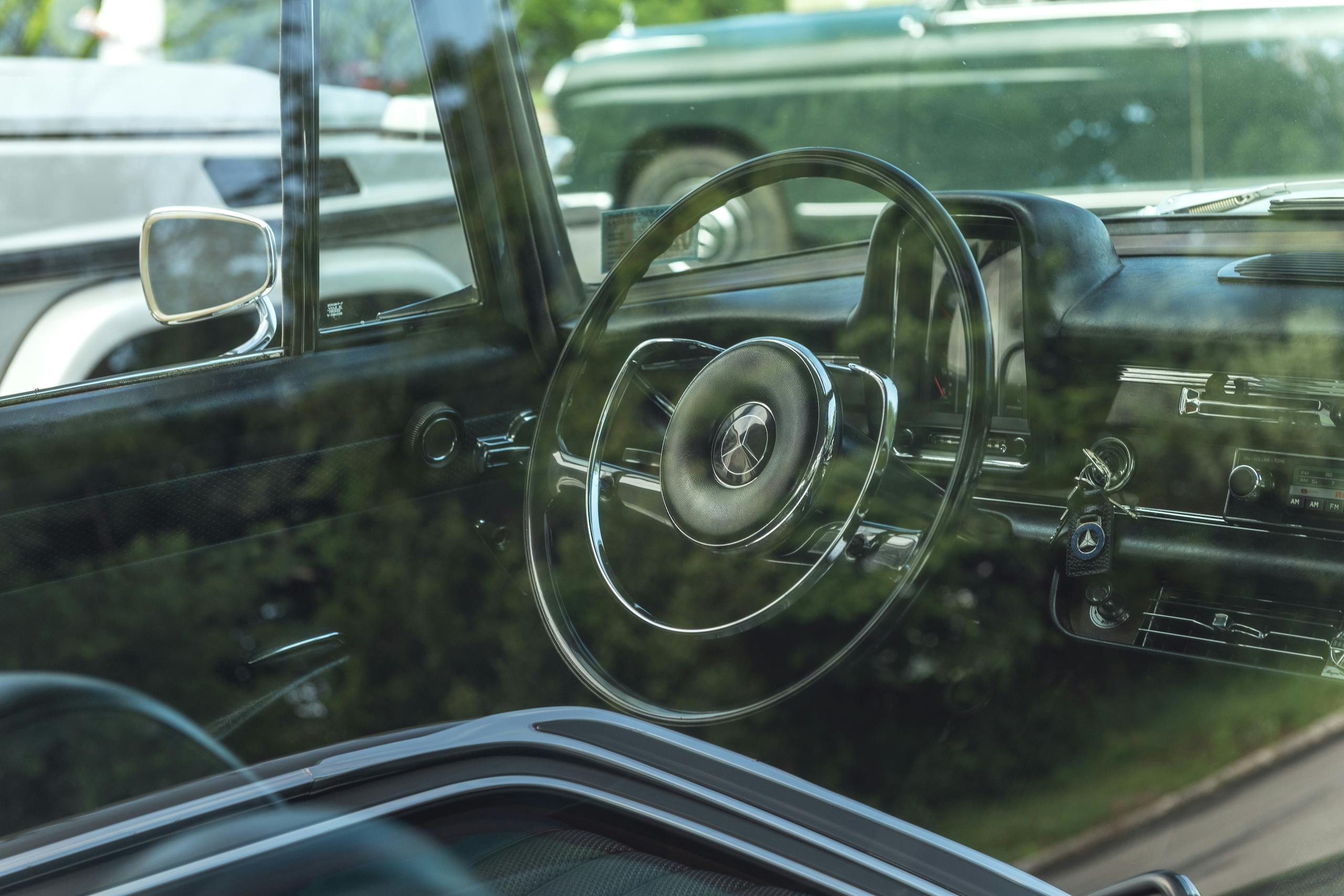
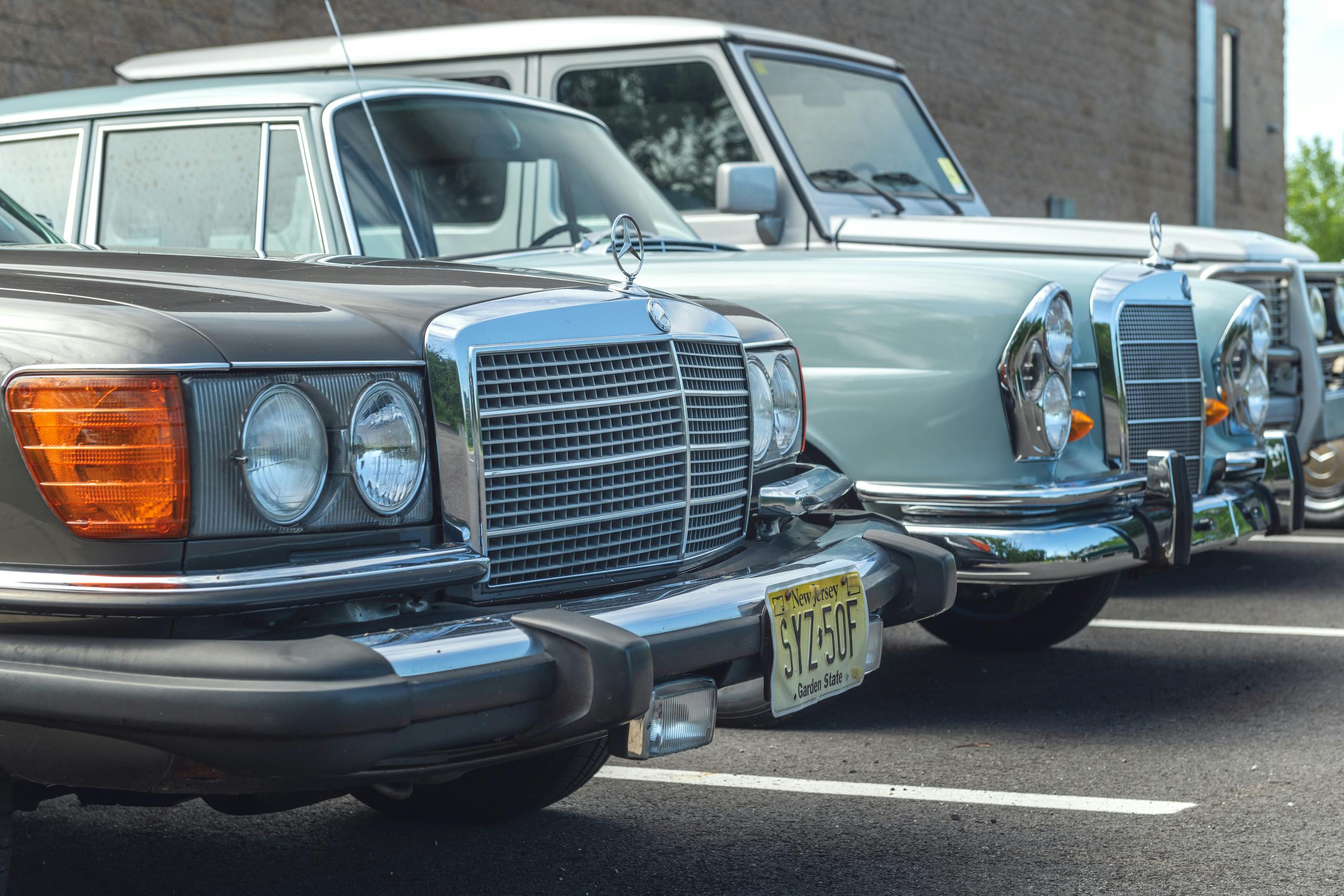
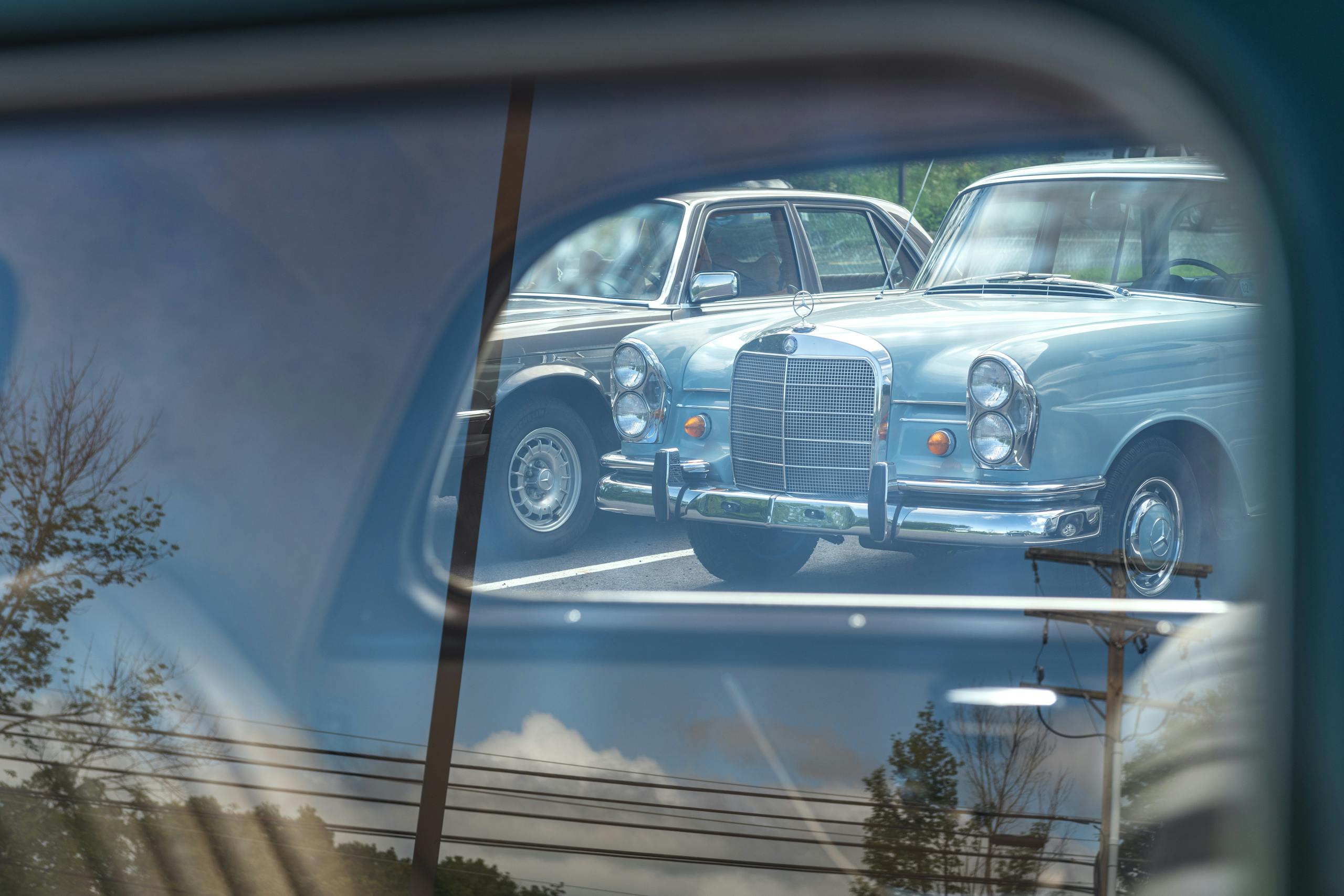
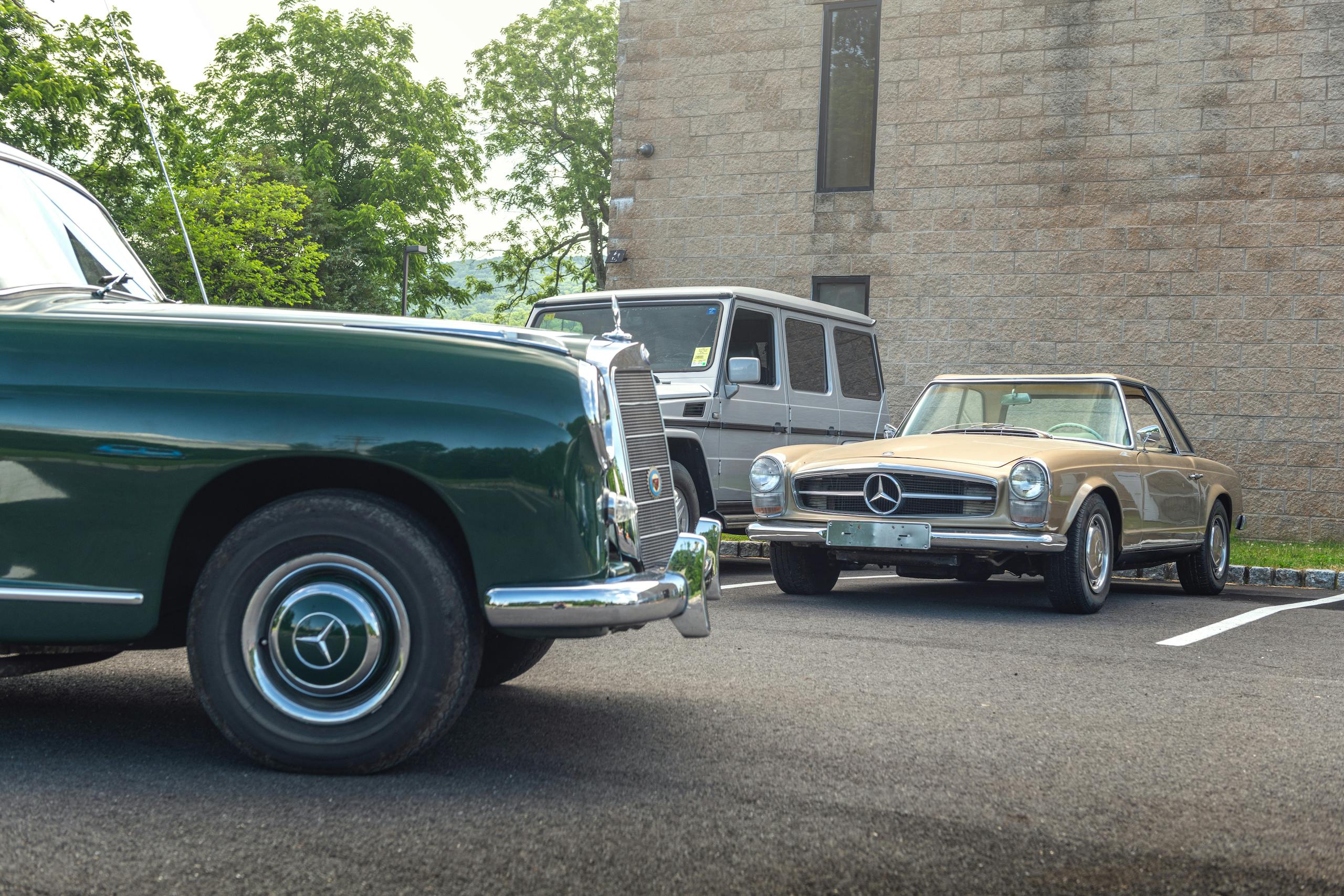


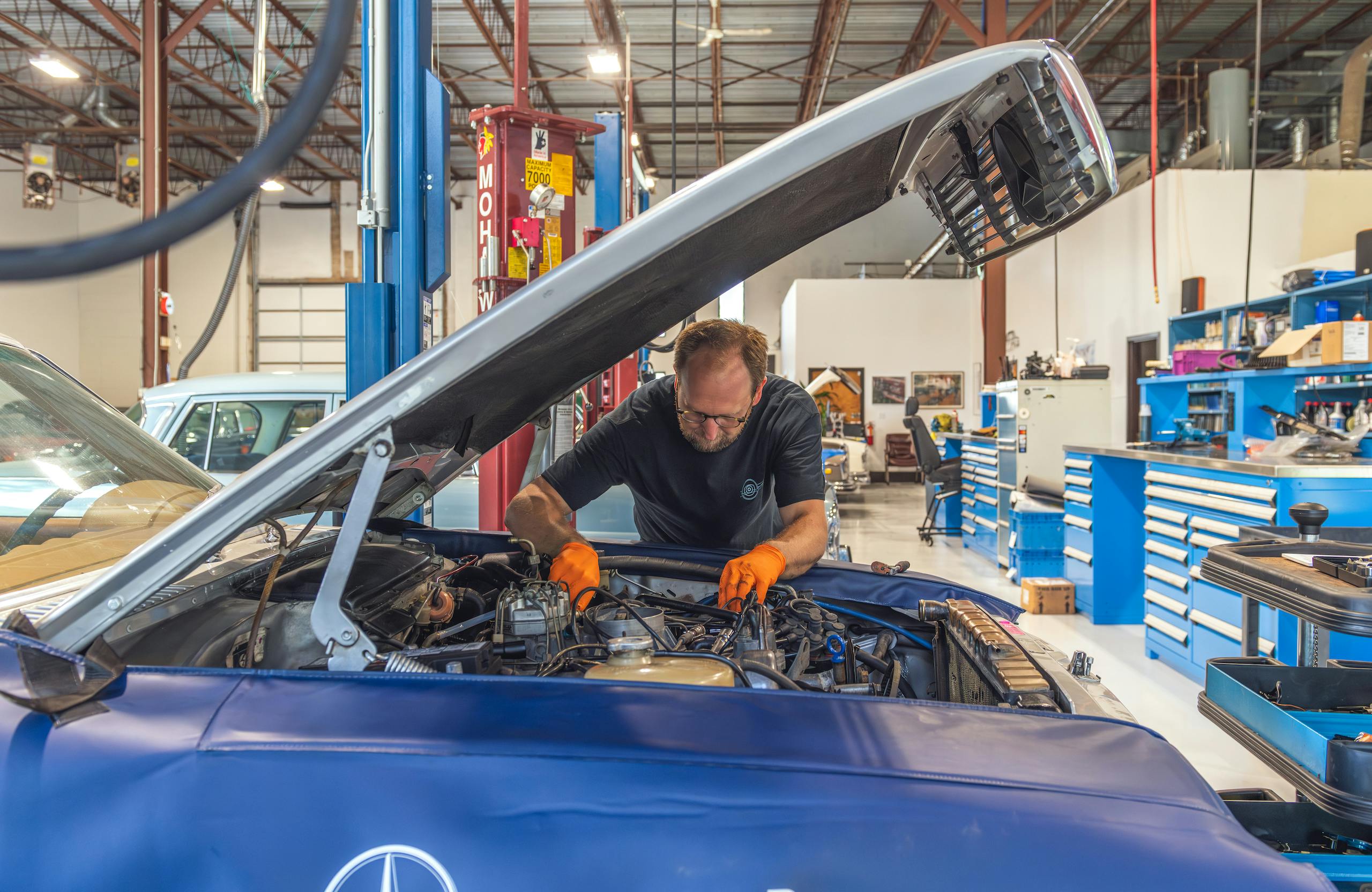
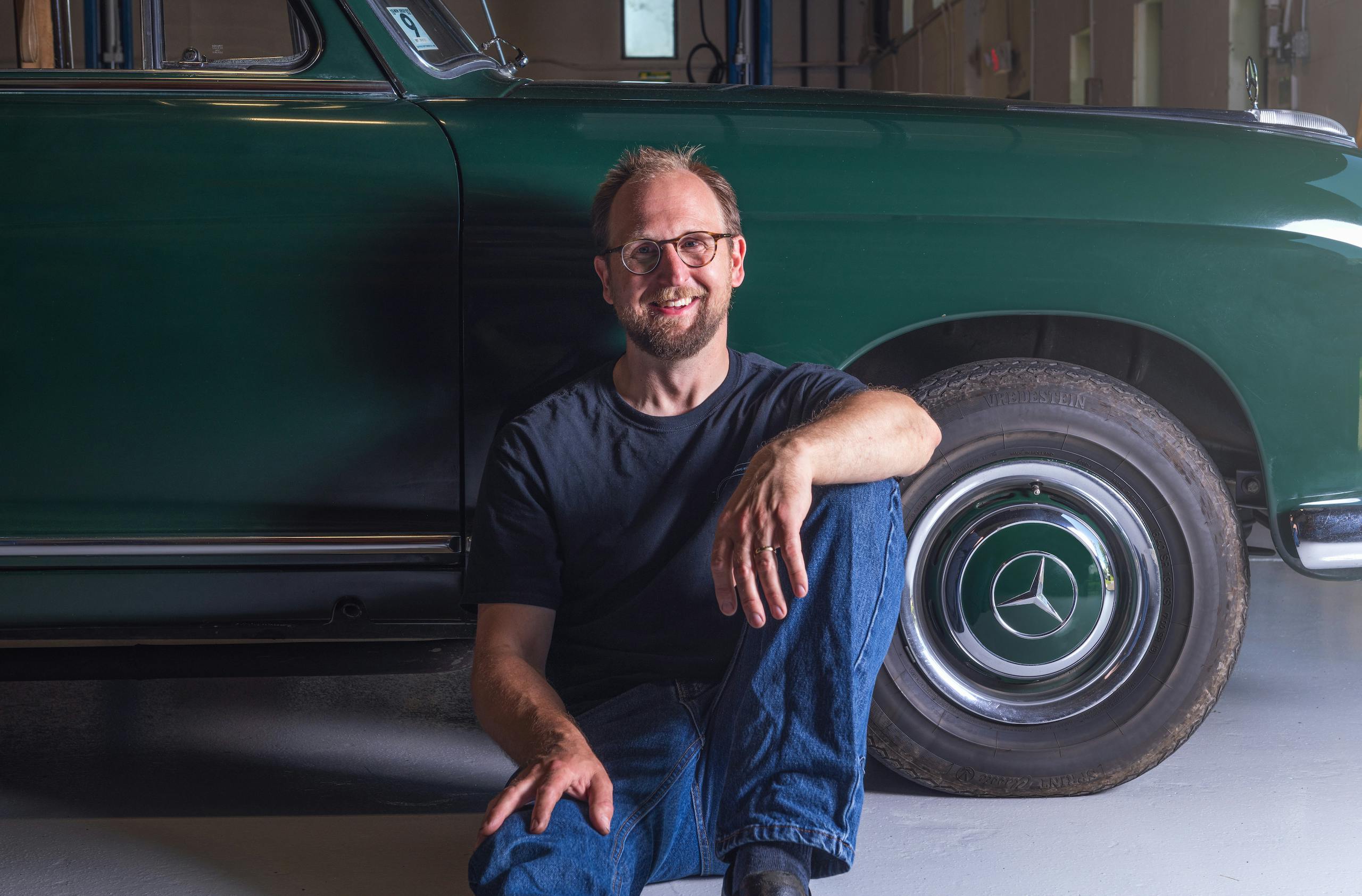
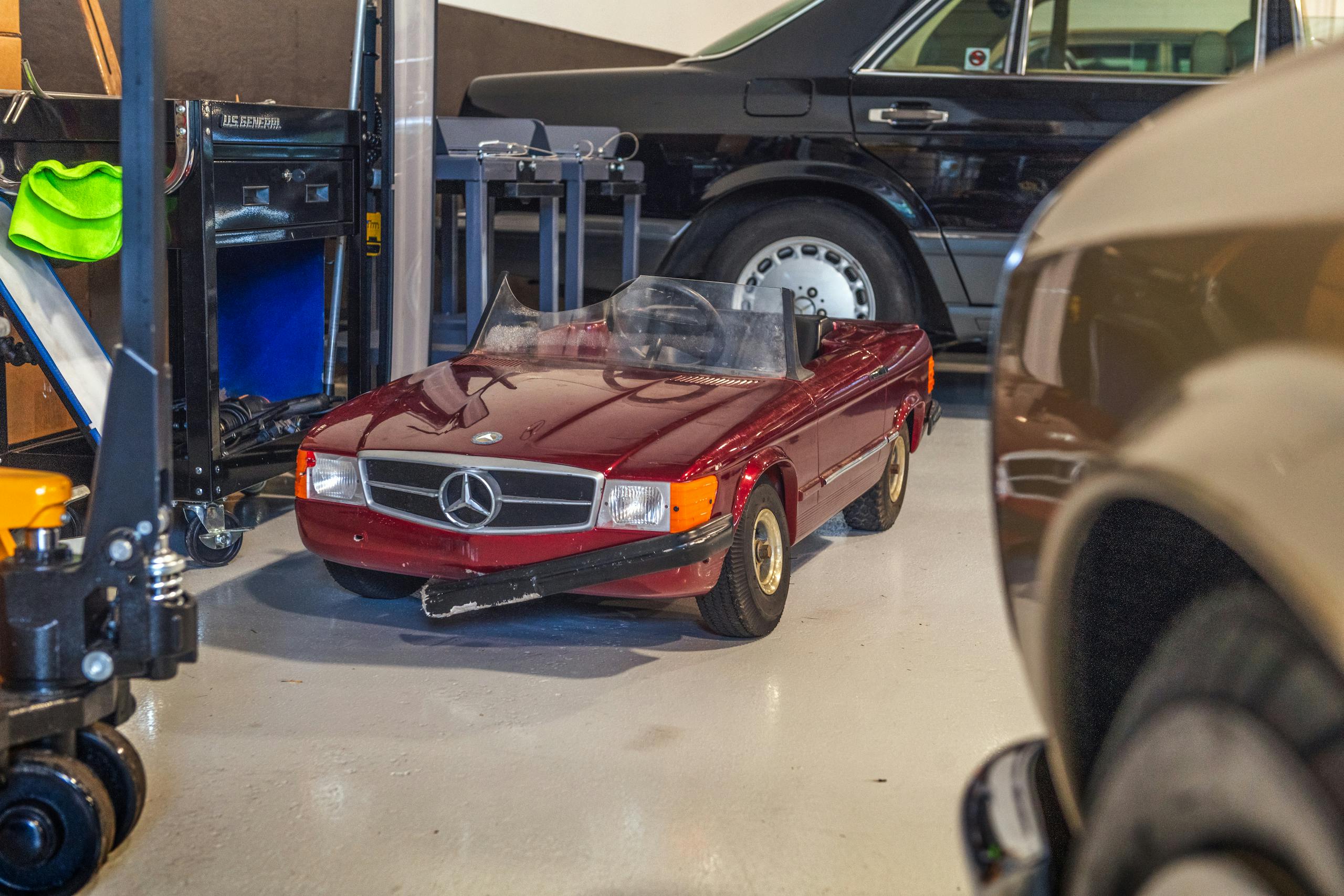
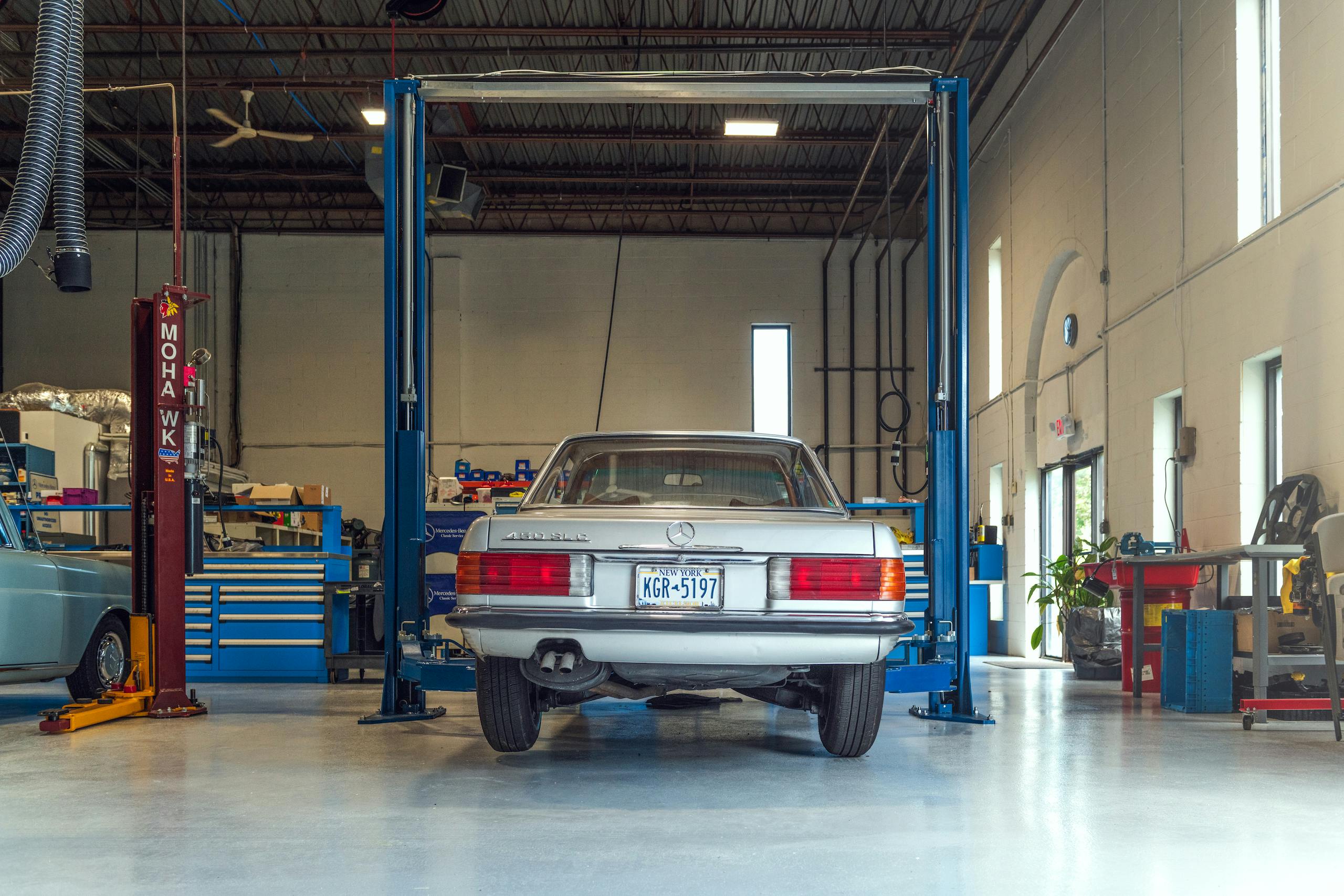
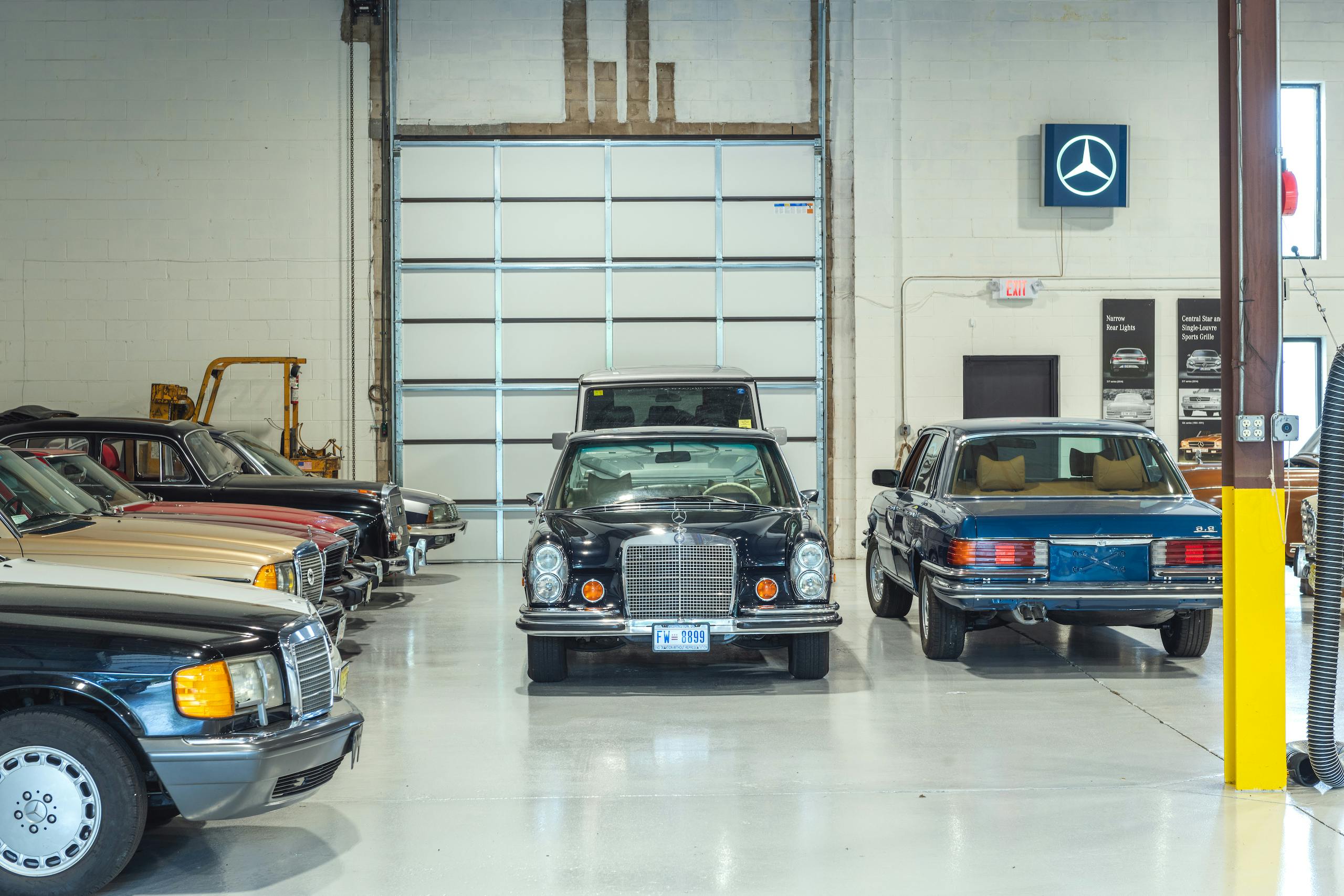

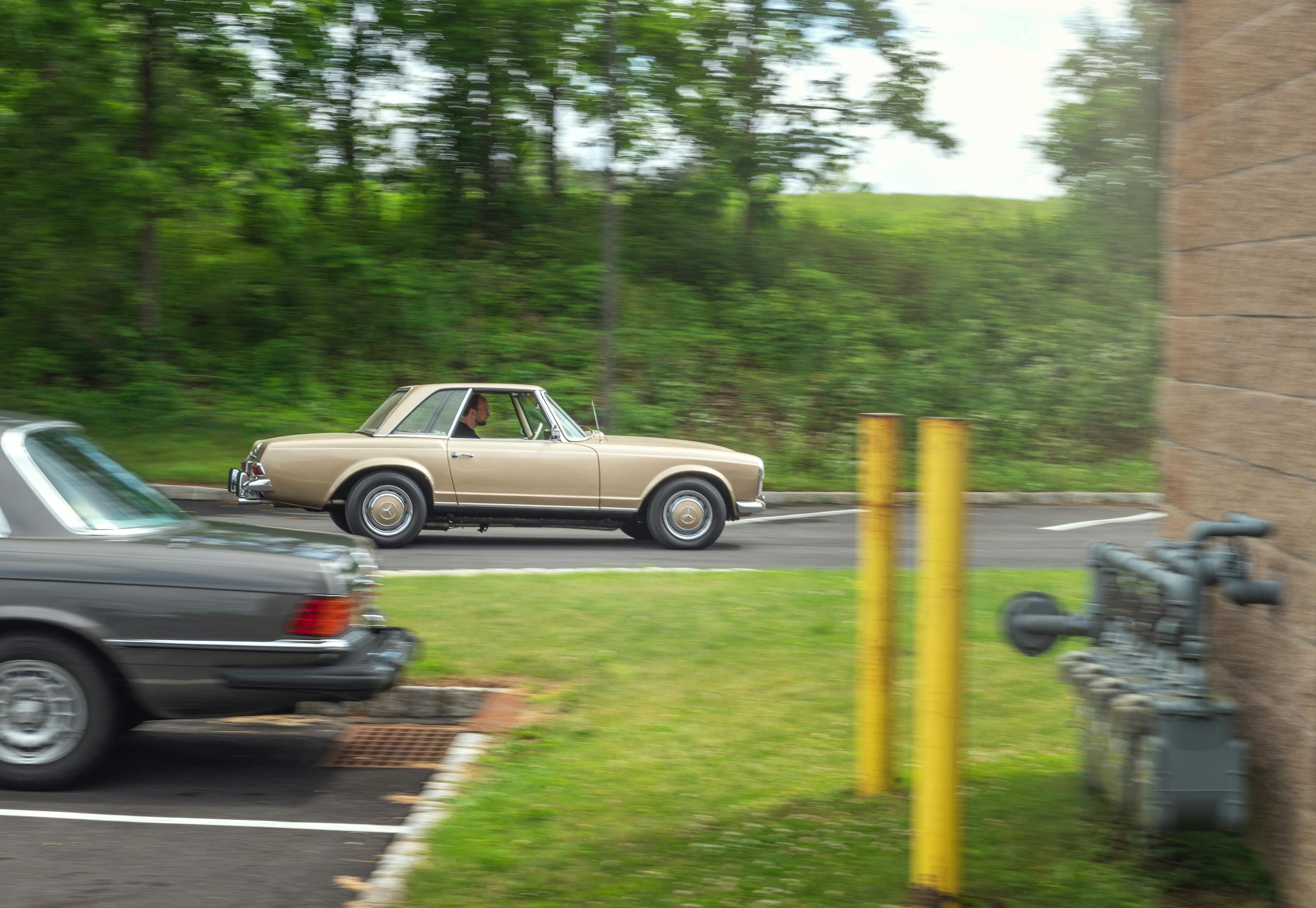
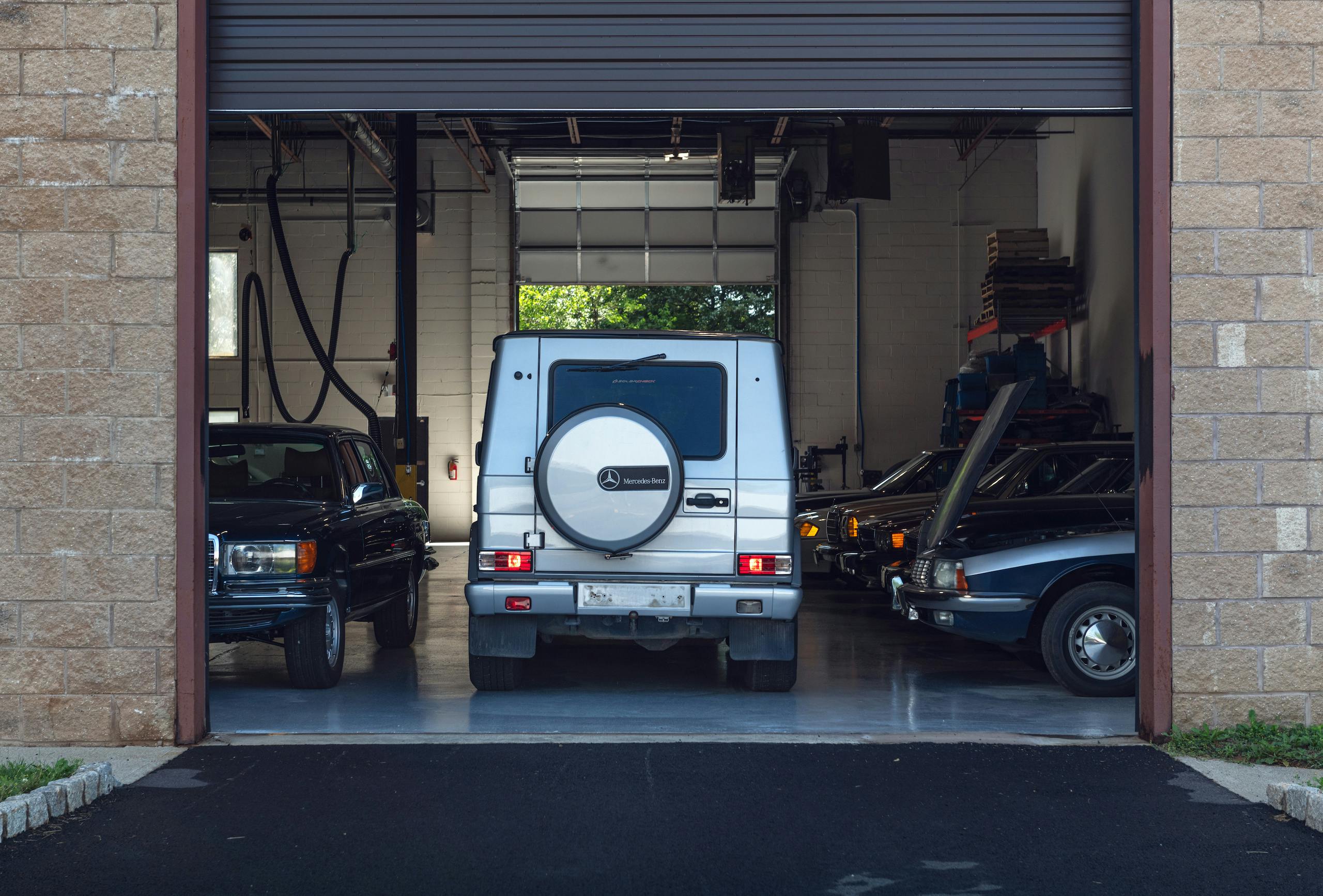

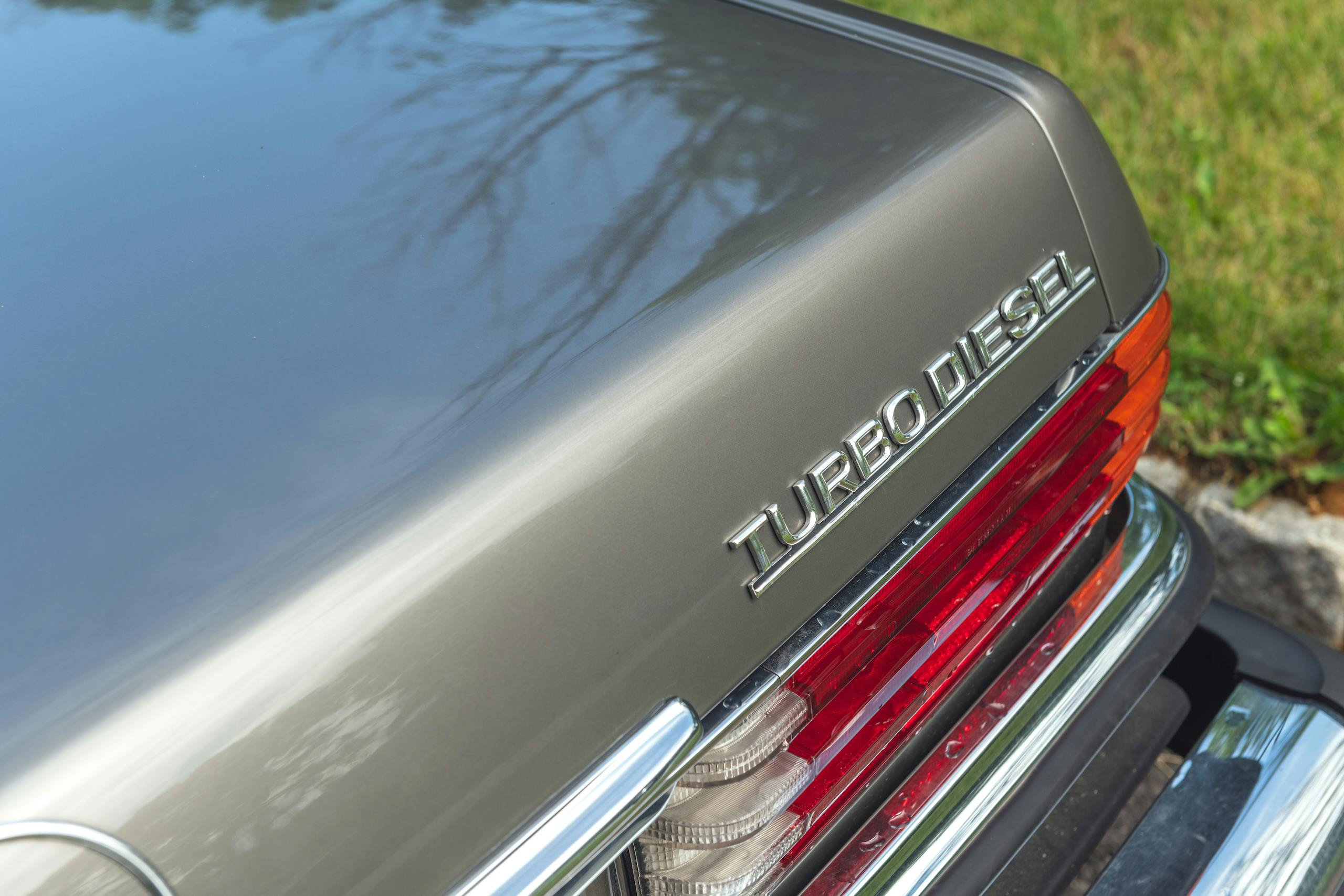


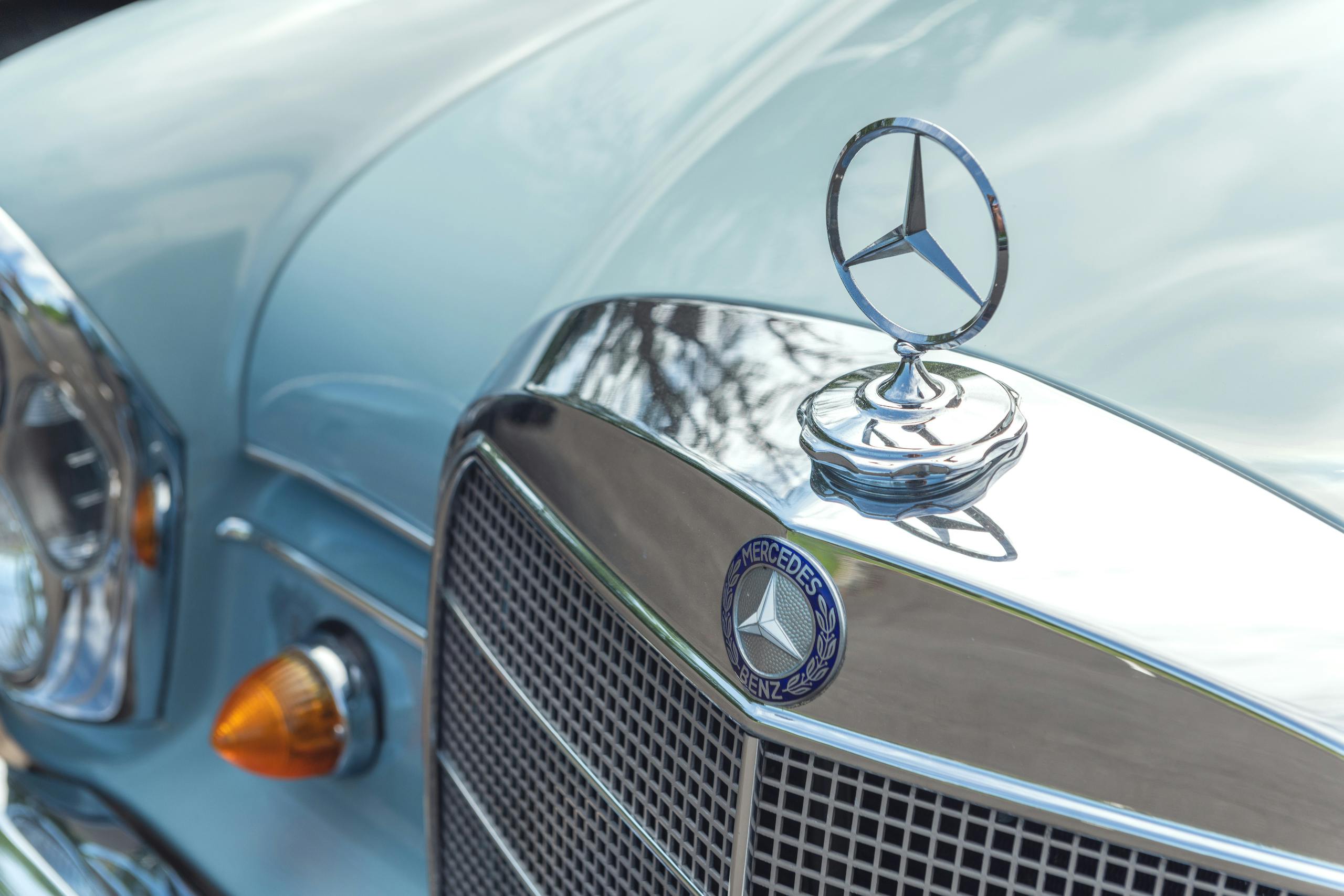
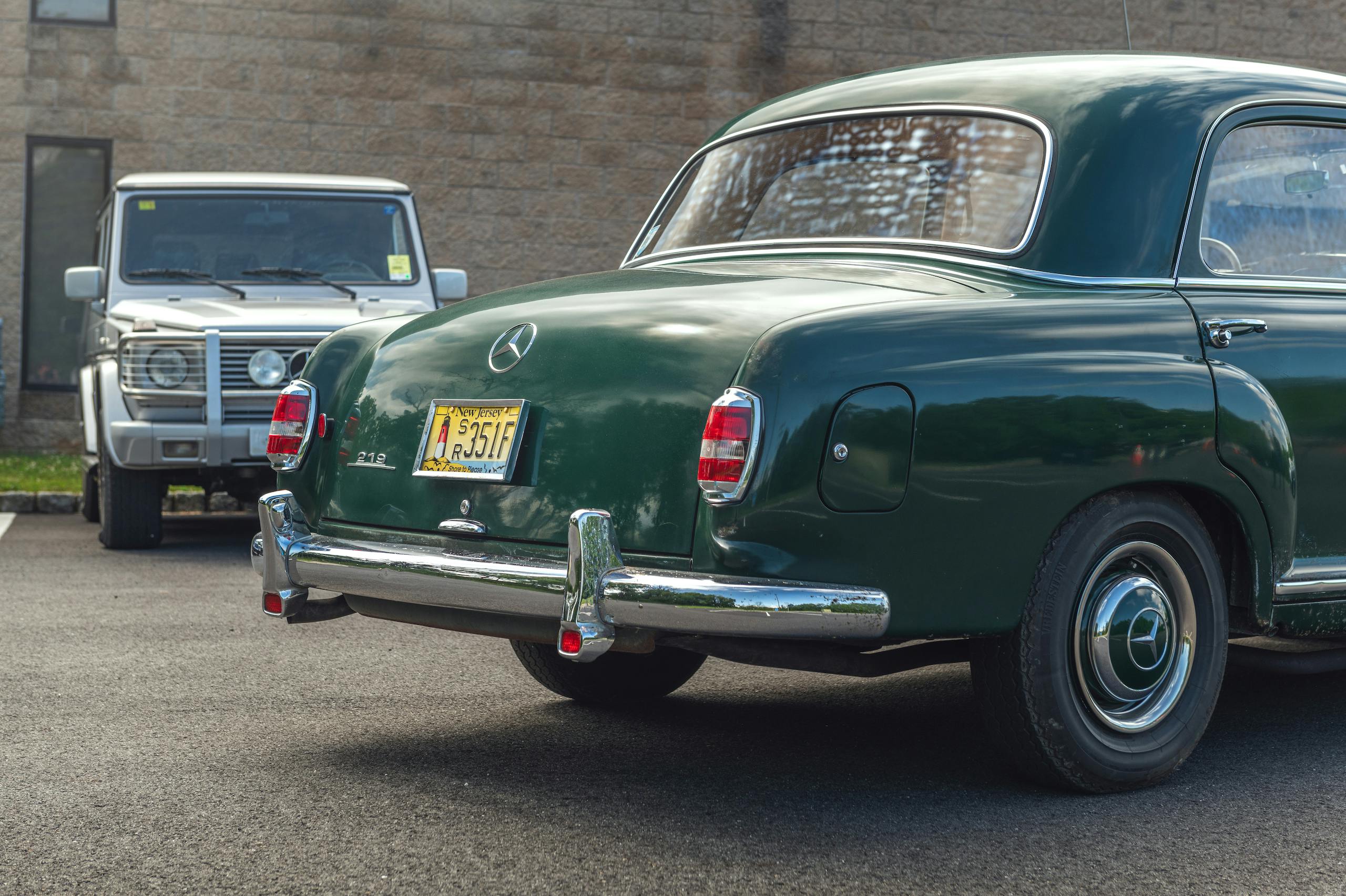
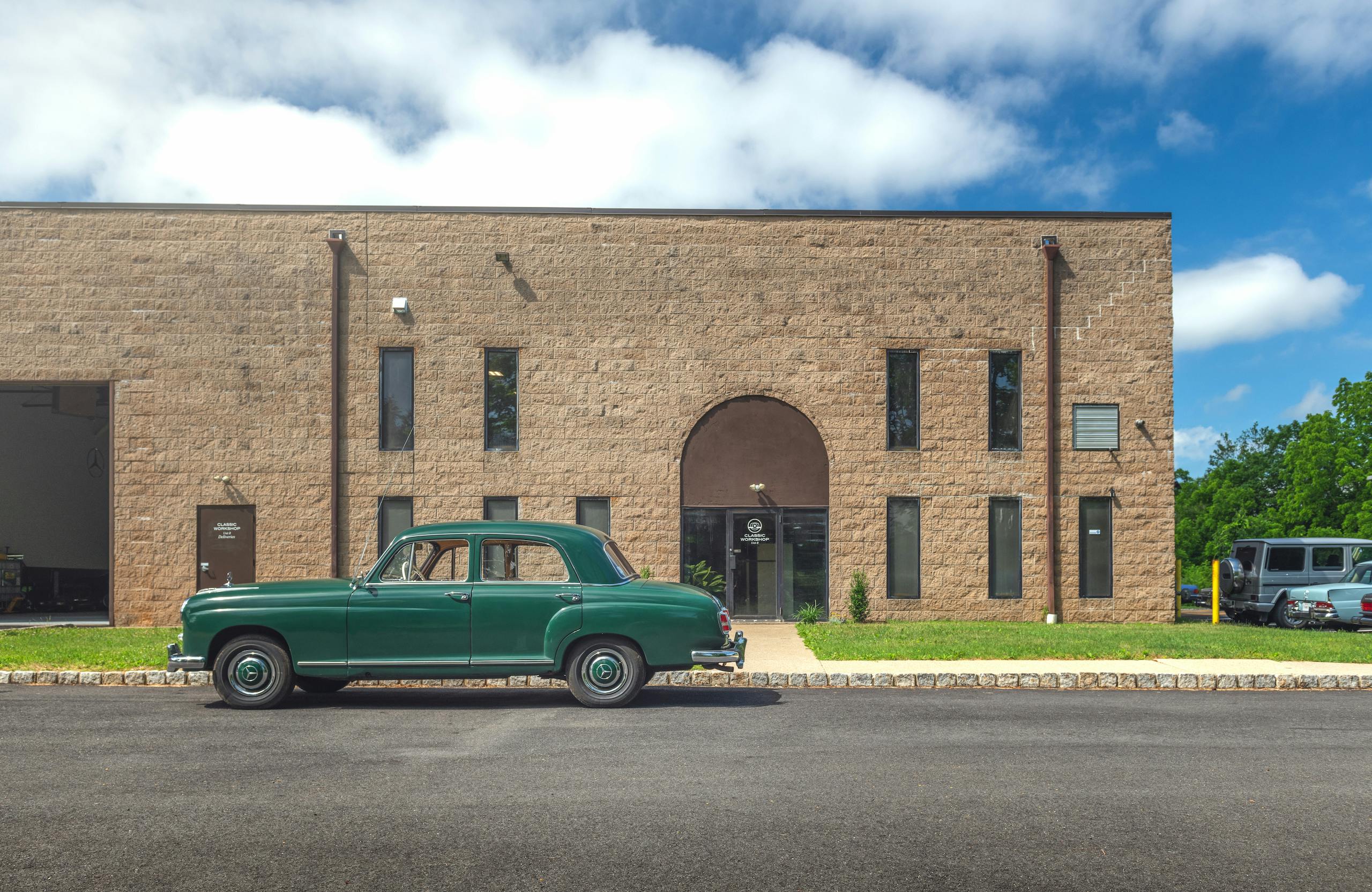



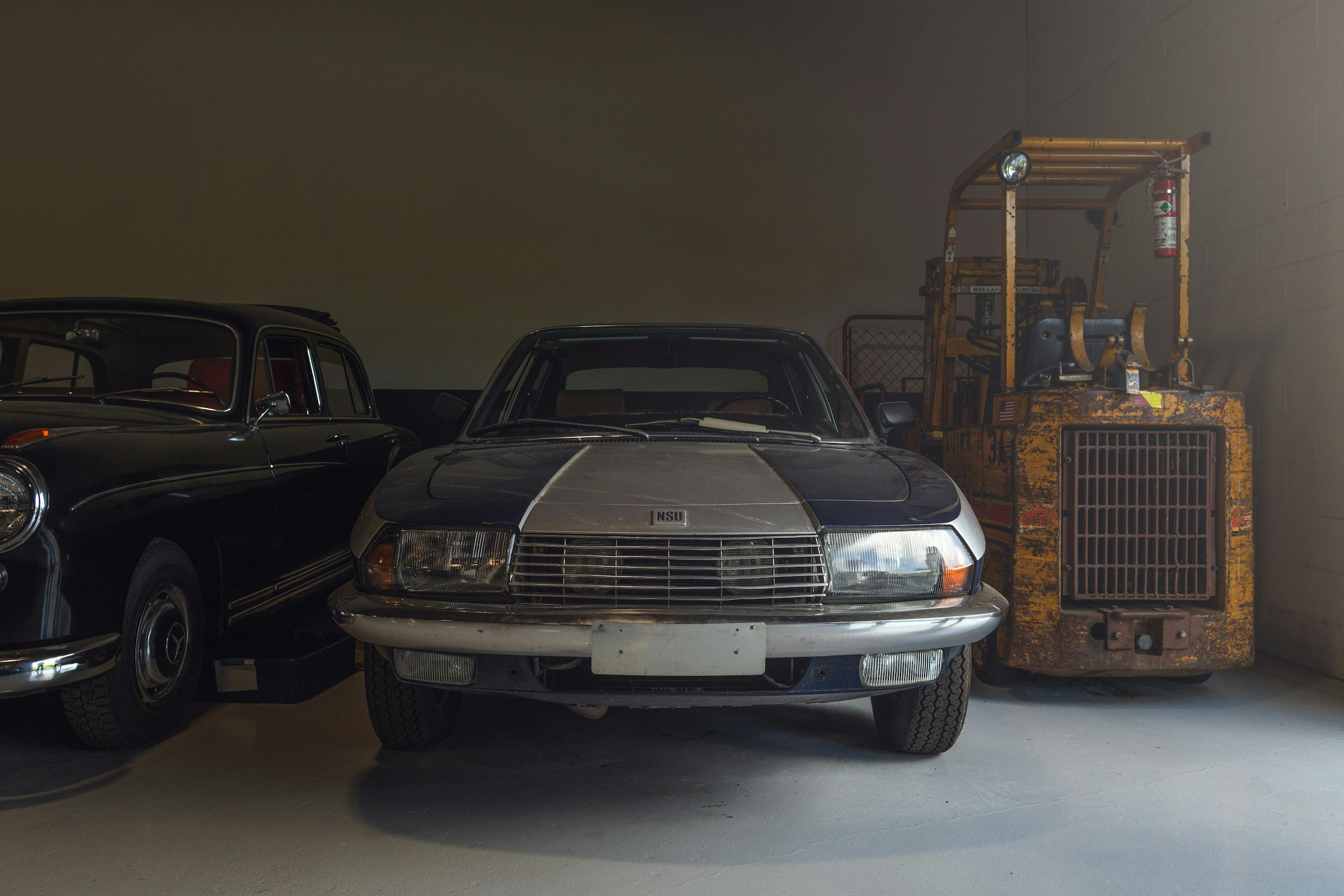
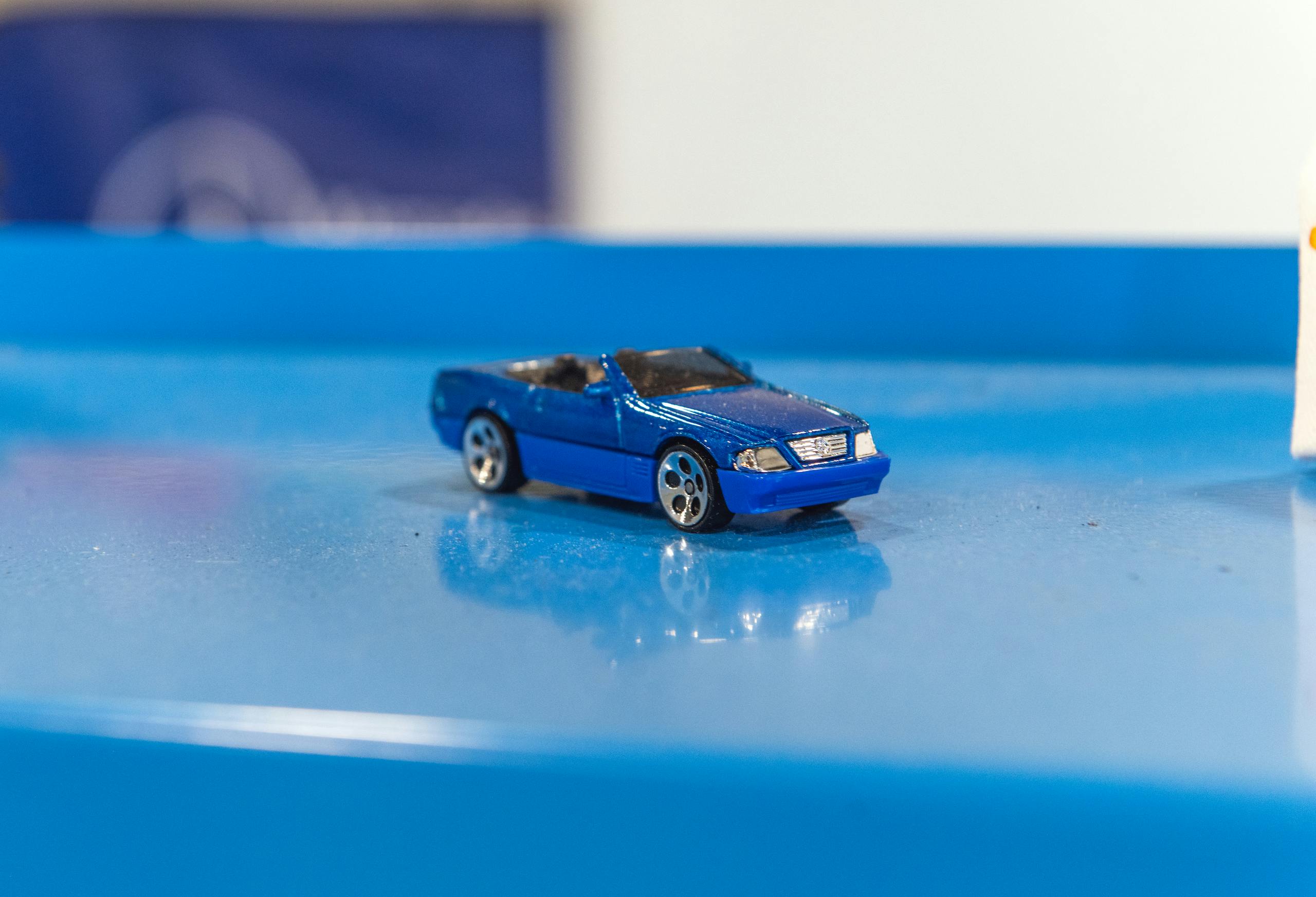


Cool business. I wish it was not a continent away. I spent much of this summer working on my 1995 E320 wagon, and I marvel at how well built the car is.
I’ve known Jaime since he was just out of college. I can’t think of anyone I know who is more deserving of success. He’s worked hard and gained a well-deserved reputation as one of the best in the industry. Congratulations, Jaime!
Hagerty, it looks like you’ve got some trolls posting in the Comments. Please look into it. Thanks.
In 1972 I bought a 1962 Mercedes 220sb with about 110,000 miles or so. I think I paid $500. One night my wife and I took the dirt road shortcut to try to get to the drive-in movie before the show started. I was fairly new to the car and was driving fast. At a certain point I was surprised that the car was shimmying more than I thought it should at the speed I was driving. I looked down and saw I was doing 85mph! What a car that was. Someone ran into me head on and the insurance company took advantage of this young and naïve owner and totaled it. I lost a very repairable jewel. I’ll never buy insurance from Allstate. Ever.
I like that Green on that Mercedes. It looks good.
I like that light blue,a very hard color to make look good on a car IMO.Those are some beautiful rolling works of art.
Cool article. Great to see younger guys (and girls) that are into the classic and vintage car scene. I did the same many years ago when I was an engineer with a giant aerospace firm but lived for motorcycles. The market today is stronger than ever due in part to COVID and the value of vintage vehicles. Today, I am working on a 73 CB750 cafe bike restomod and a 84 RZ350 restoration. Hard to imagine ever punching a clock again but everyone’s personality is different, so no judgement. But if you want to do it, as Nike says “just do it”!
This is a very cool article. Five years ago, I purchased a somewhat worn out 1988 300CE because I wanted the experience of rebuilding a Benz and the 300CE had beautiful body lines. The car sold for about $53K in 1988, but you can buy one for peanuts today. I paid $5,500 for mine.
Many parts are easy to find. Those are the suspension and engine parts shared with the 300e sedan. But many parts unique to the coupe are almost impossible to locate. I don’t agree that Mercedes supports its older cars. Try to find the antenna gasket or interior parts for a 300CE.
But the car inspires confidence in many ways. It’s the only classic car that I own that doesn’t leak oil. I trust it to get me anywhere and back. I have performed massive rebuilding of the suspension, brakes body and interior along with a thousand small issues to make the car into a beautiful restoration. Unfortunately, I now have $35K in a car that’s worth about $13K. One thing leads to another.
Despite being a rust free and straight southern car with an engine, transmission and differential that were basically sound, the car wasn’t worth restoring. But sending the car to the junk yard would have been a shame. I have no regrets, but don’t get the economics of why a nice car like this isn’t worth restoring.
Congratulations, Jaime. Well Done !
Jaime- If you ever get tired of the weather in New Jersey, consider Charleston, South Carolina where the only shop able/willing to work on Mercedes older than 1990 closed suddenly. Now my nearest experienced technician is in Savannah, Georgia; more than a two hour drive.
30 years ago I bought my wife a 81 300D. Bought it from a pastor and it was sitting on the church lawn with a 4 sale sign. Forget how much. Maybe $3,000. The dishonest priest had me sign the title little did I read it and later found out, (without him telling me…..Love that old time religion, right?) that it was a salvage title. Beige car, my wife still worked and drove it proudly to work every day. Gutless for sure on power, but stately to say the least. She LOVED that car and now have later in life a SL550 and new GLE350, but whenever we see an old 300D we always look at each other and smile. Classic cars for sure.
The first picture in the article is our Brown 1959 220s Mercedes.
Jamie is doing fantastic restoration on our car.
Insured by Hagerty.
Too late for me:-(
Maybe 20 years ago I bought a white, 2 owner 1979 6.9 from a customer. It was an incredible car, but after I became disabled it had to live outside, and in the wet PNW I couldn’t keep up with the maintenance and had to sell it.
Oddly enough I also serviced NSU Ro 80s in the UK before immigrating to the USA. Their favorite failure mode was to rupture the diaphragm in the transmission kickdown switch. Diagnosis was easy: full bore down the local bypass, lift of the gas, and obliterate the road behind with a smokescreen that would have done a WW11 destroyer proud. What fun!
I owned a 1957 190 Ponton Merc back in about 1983 and then bought a 1959 Merc 220b Fintail in 2012. Whichever car I drove didn’t matter to me as the one was as comfortable and enjoyable as the other. Much earlier than both of these I drove a 1964 Merc 190 D for a taxi company and although it wasn’t a get up and go car I loved driving it. My shift was from 6.00 pm until 9.00 am seven days on and two days off and not once did I feel that I was overdoing things. Great cars.
I have to check this place out ! For my 1987 300 D Euro model 5 speed. It was never imported into the USA. I bought it from a mechanic friend who sold it because he didnt have room for it.